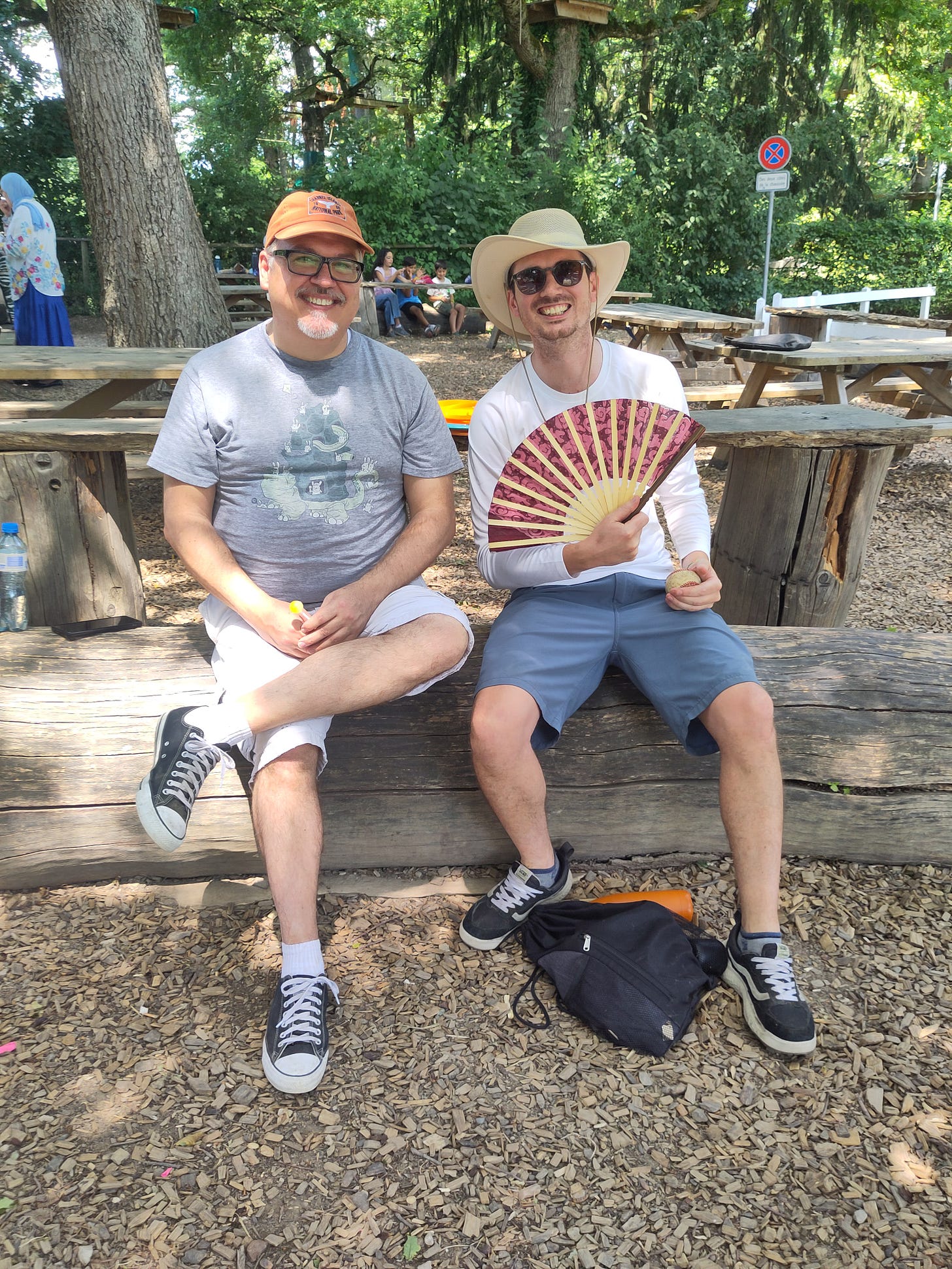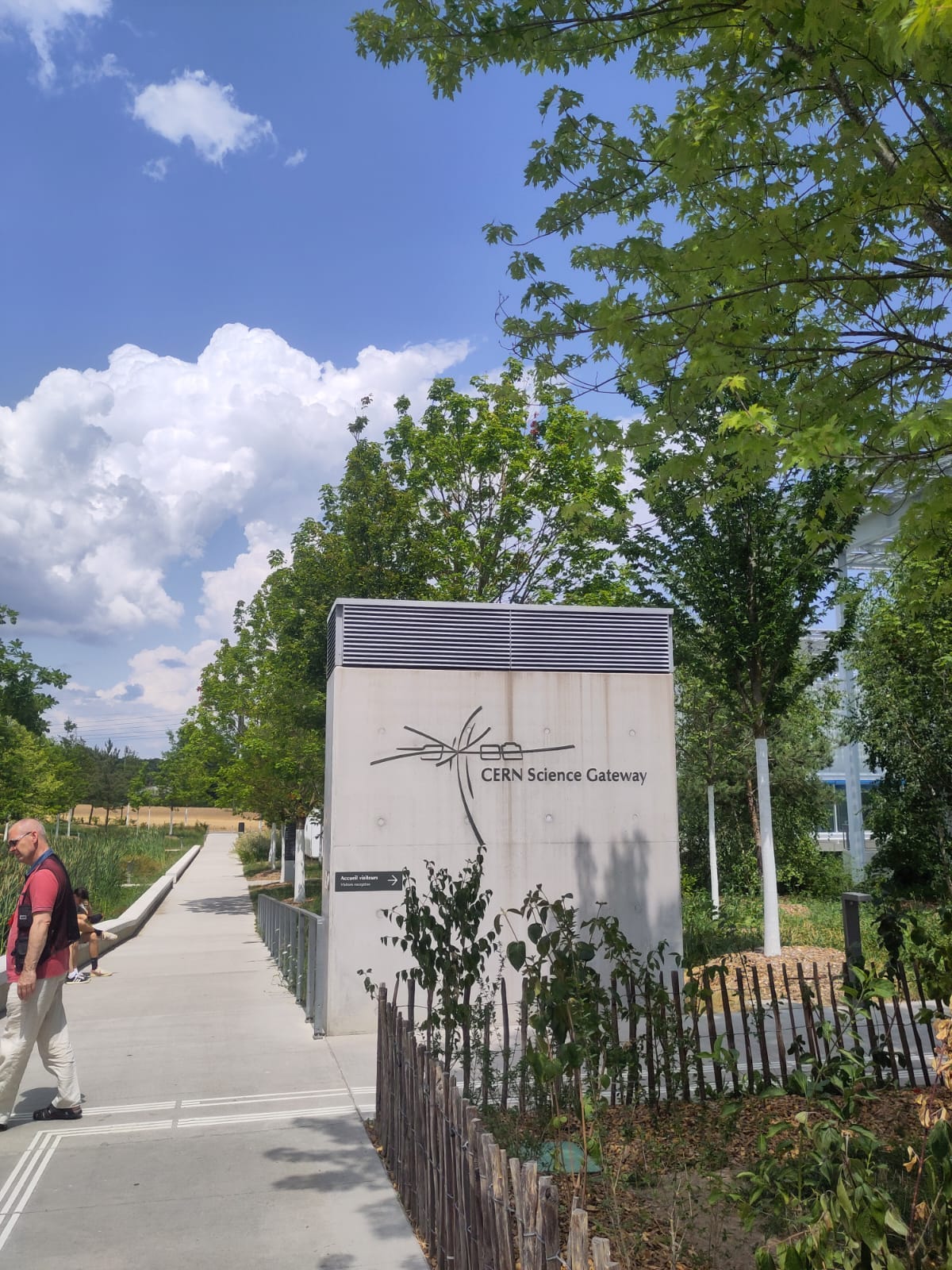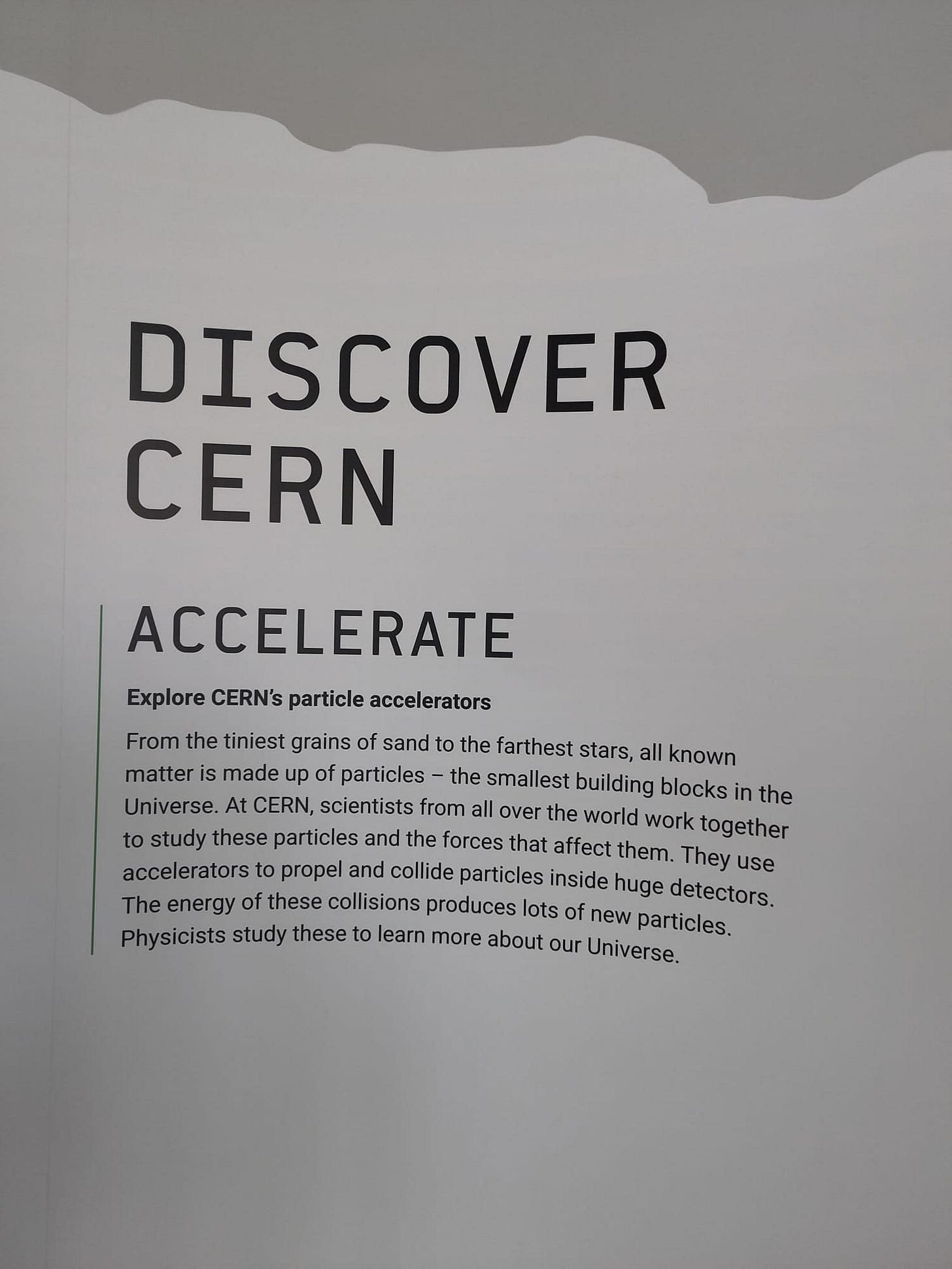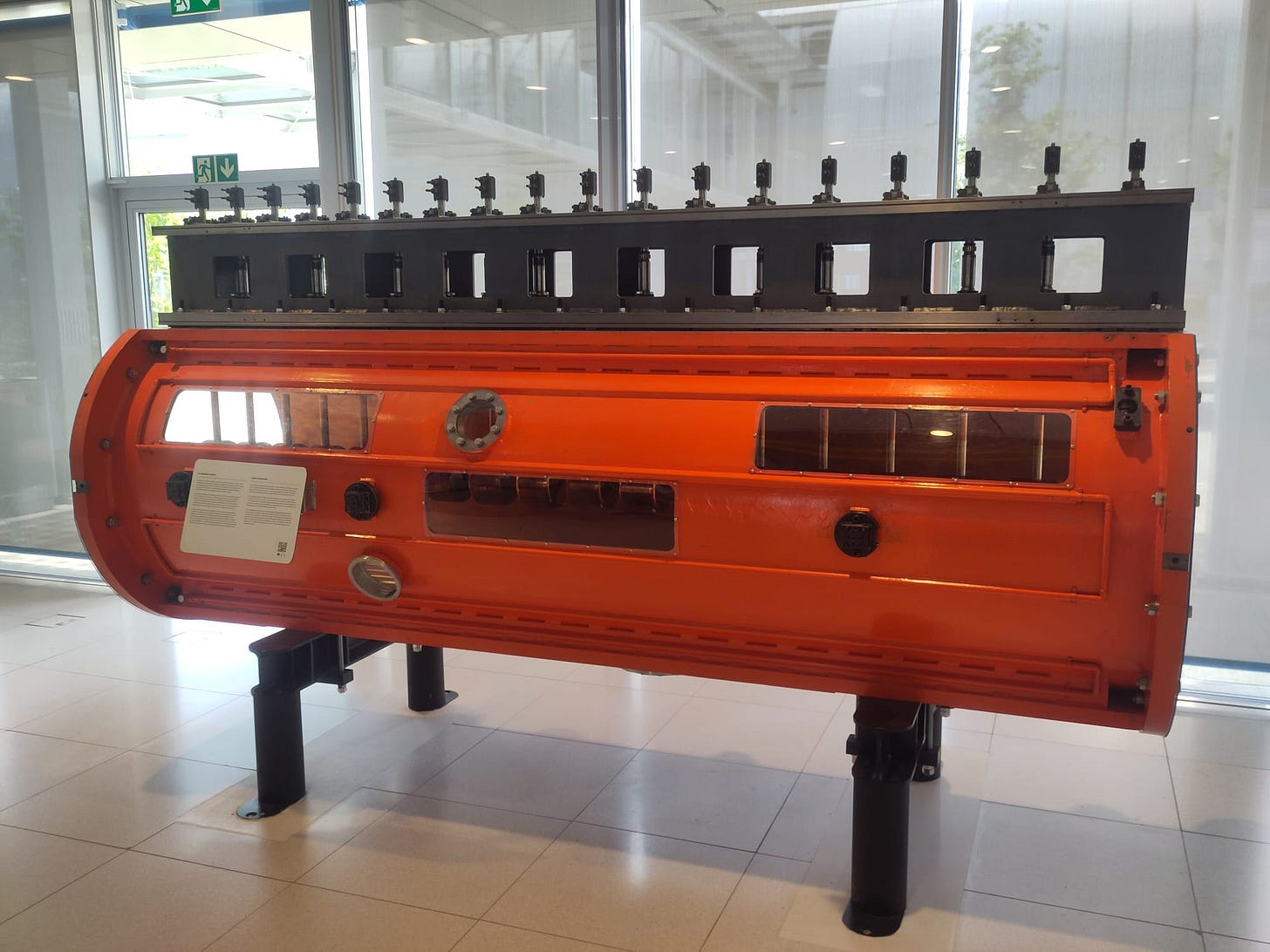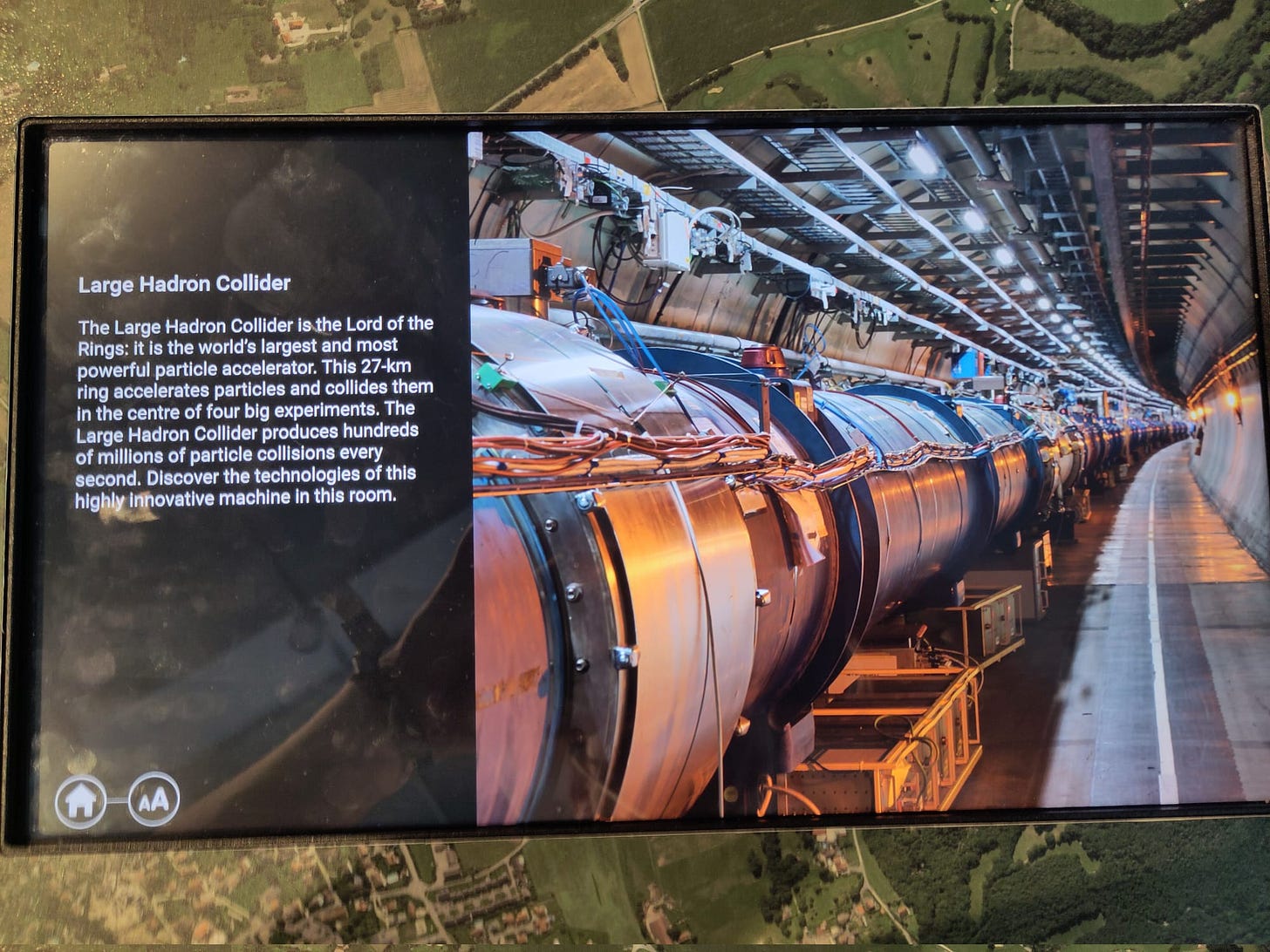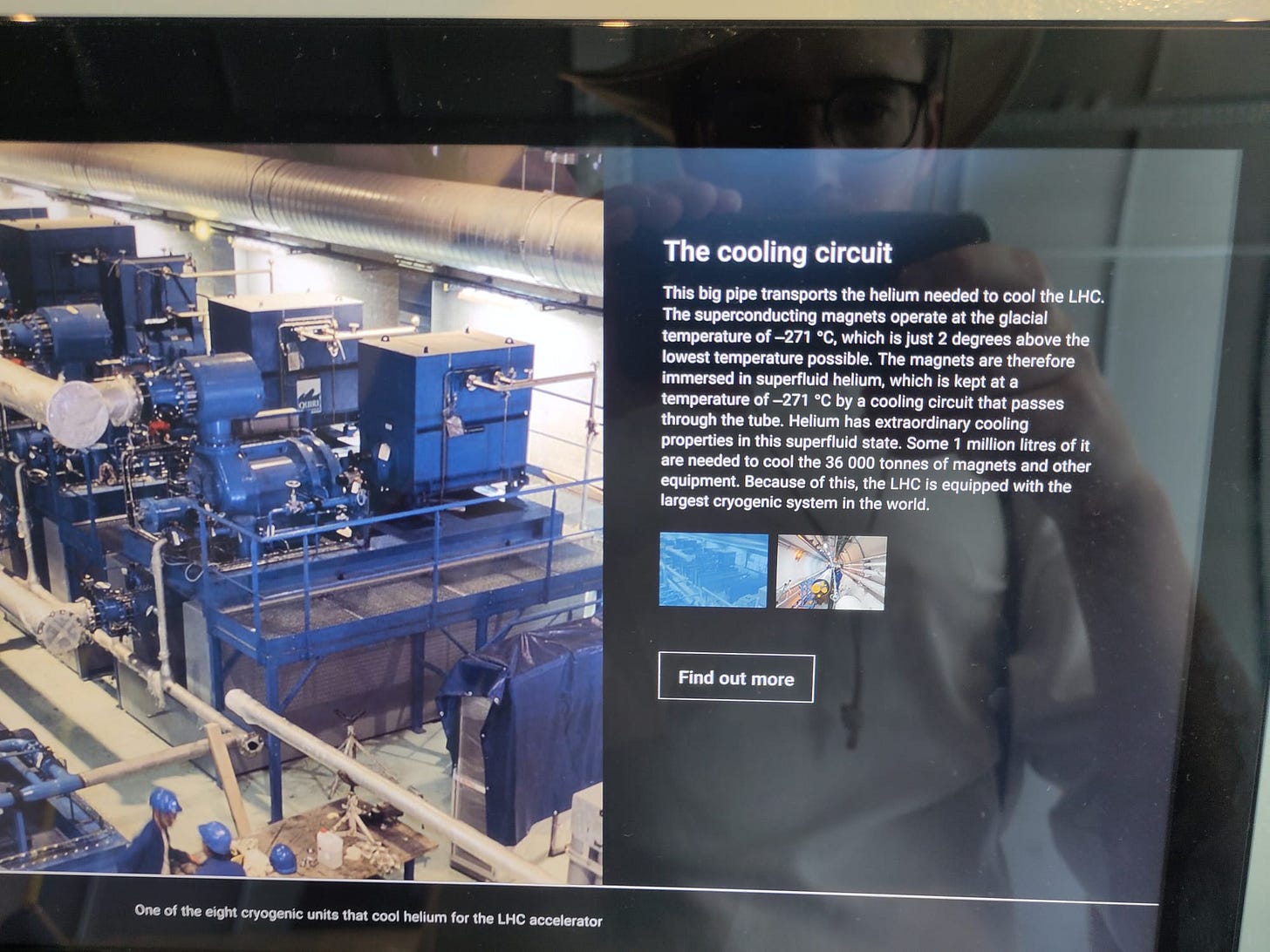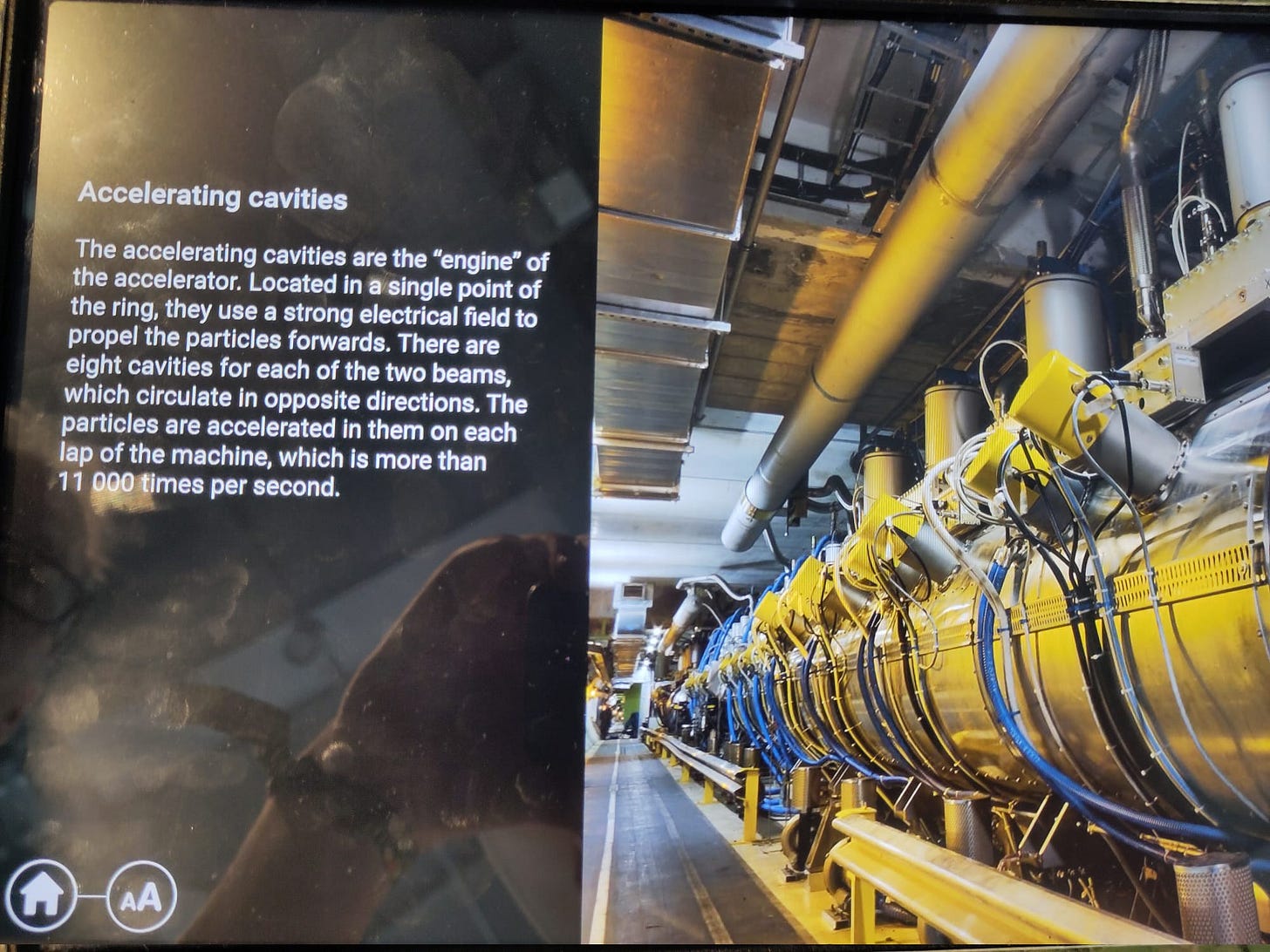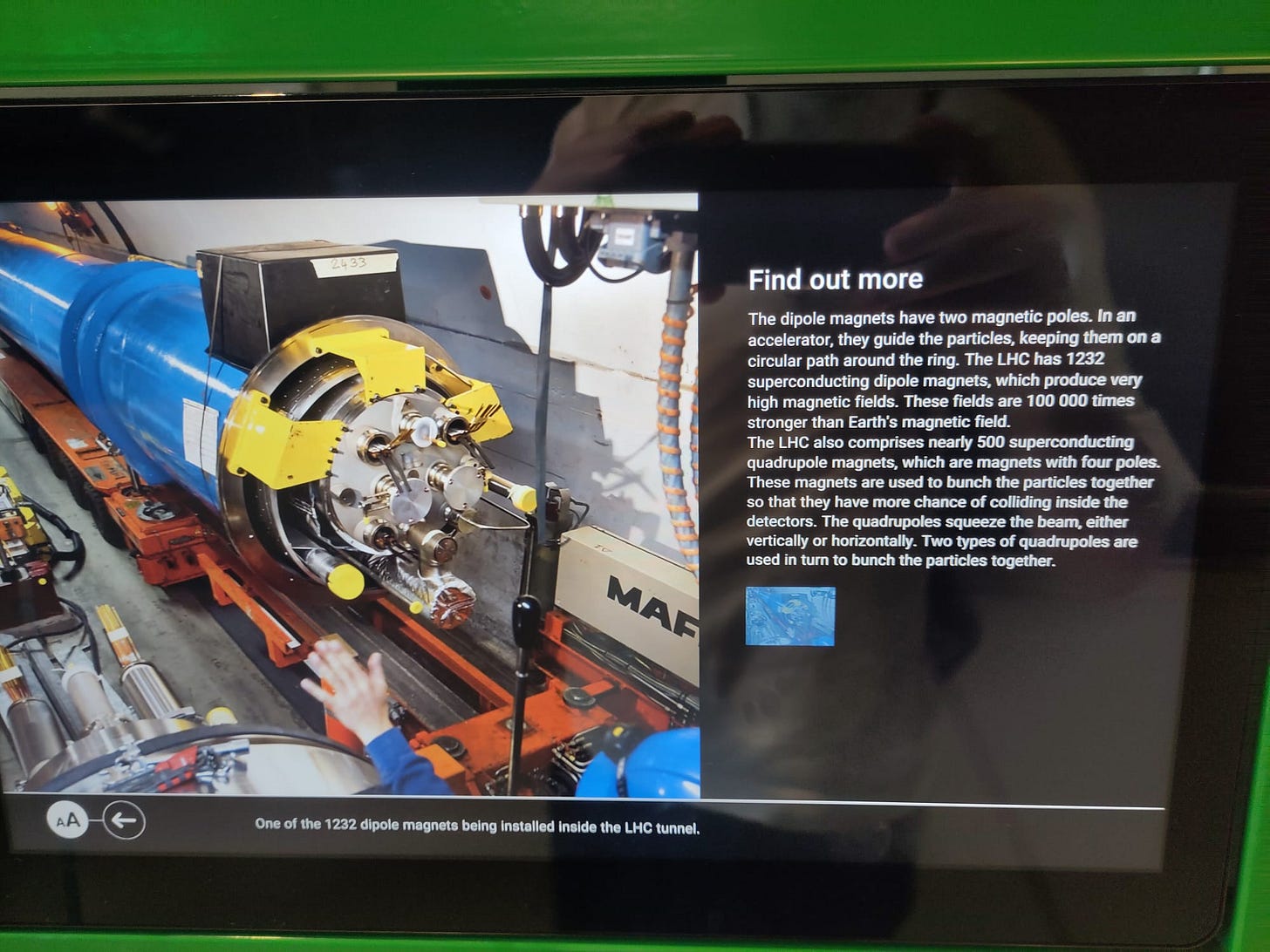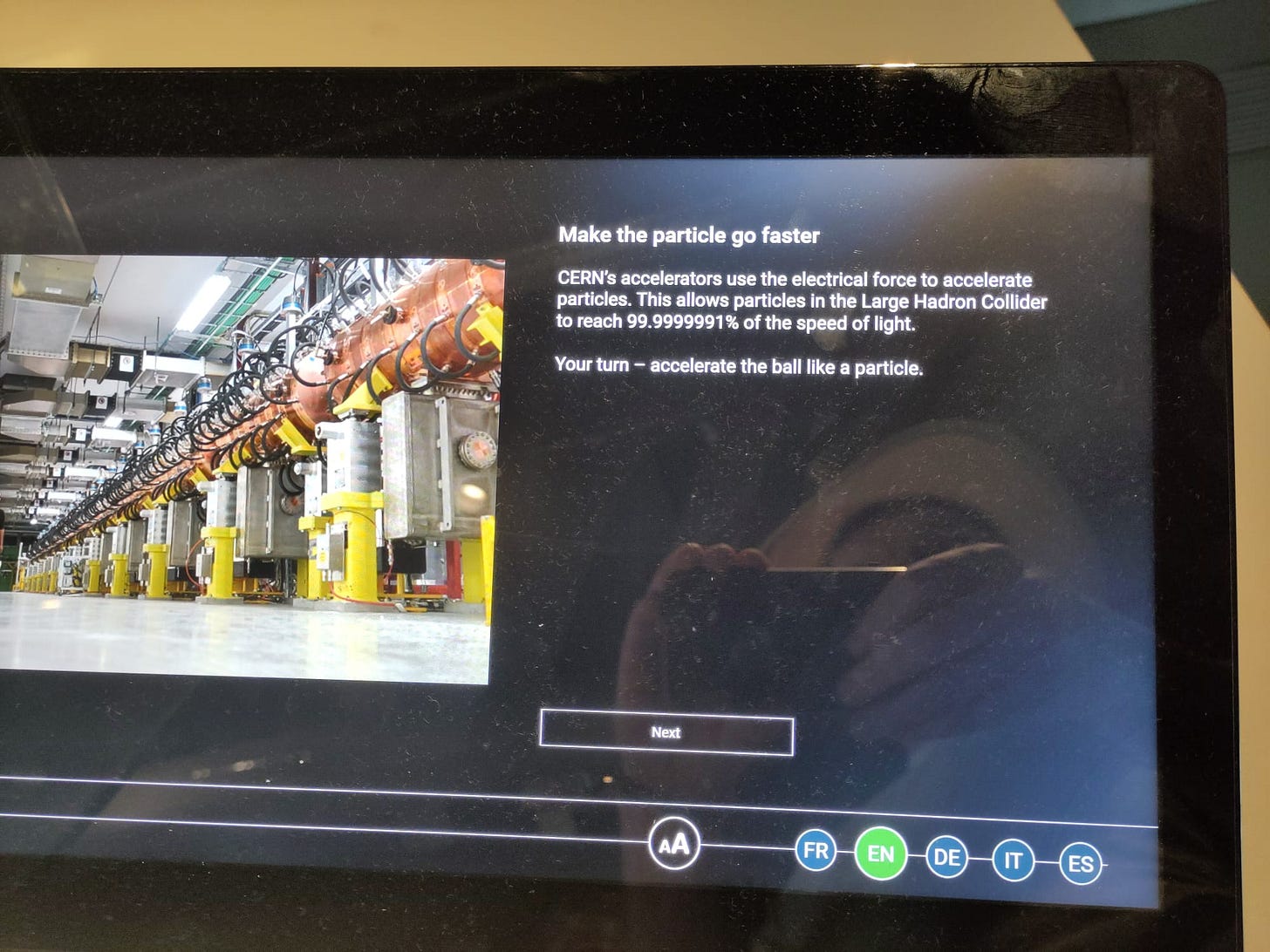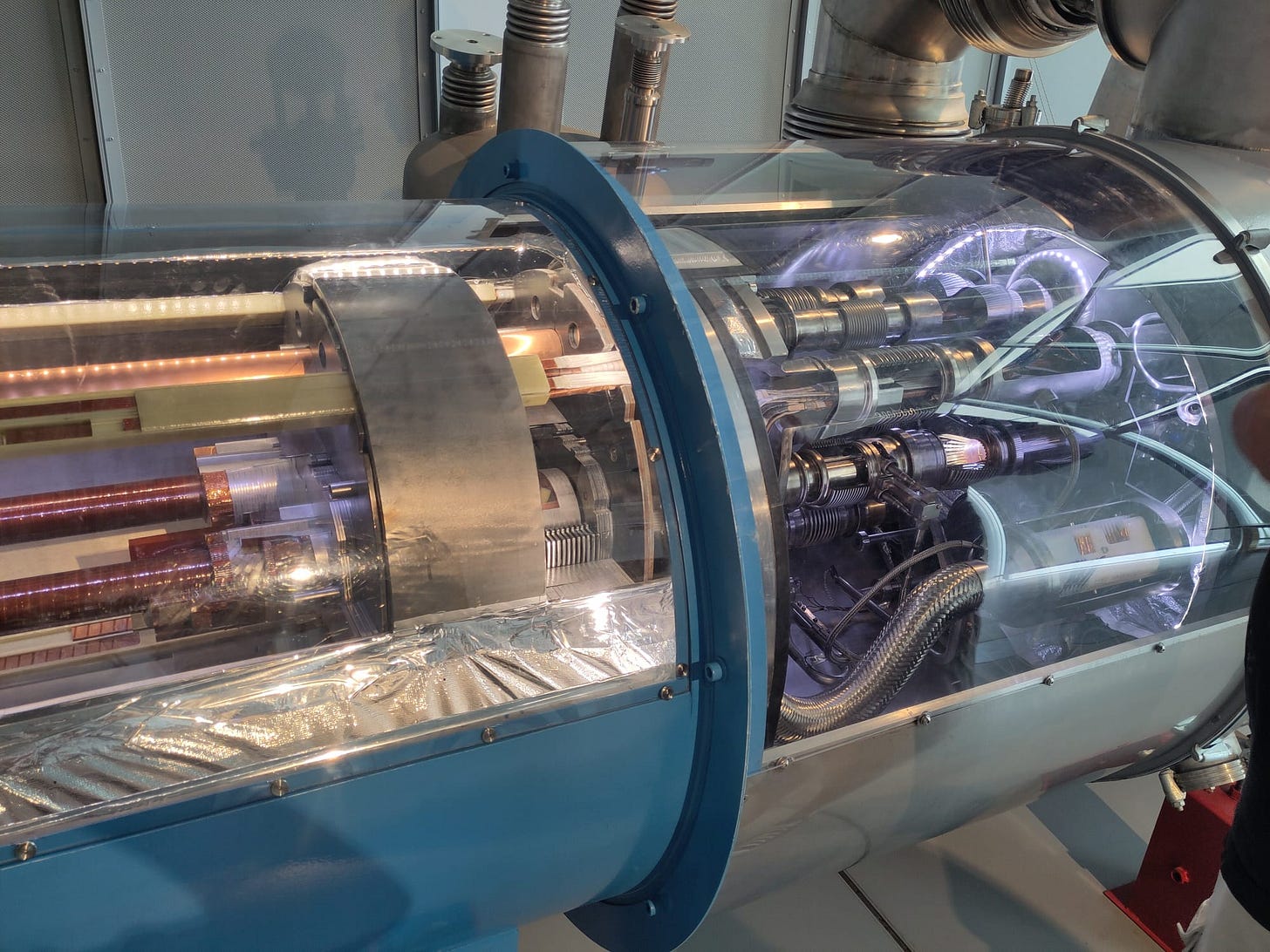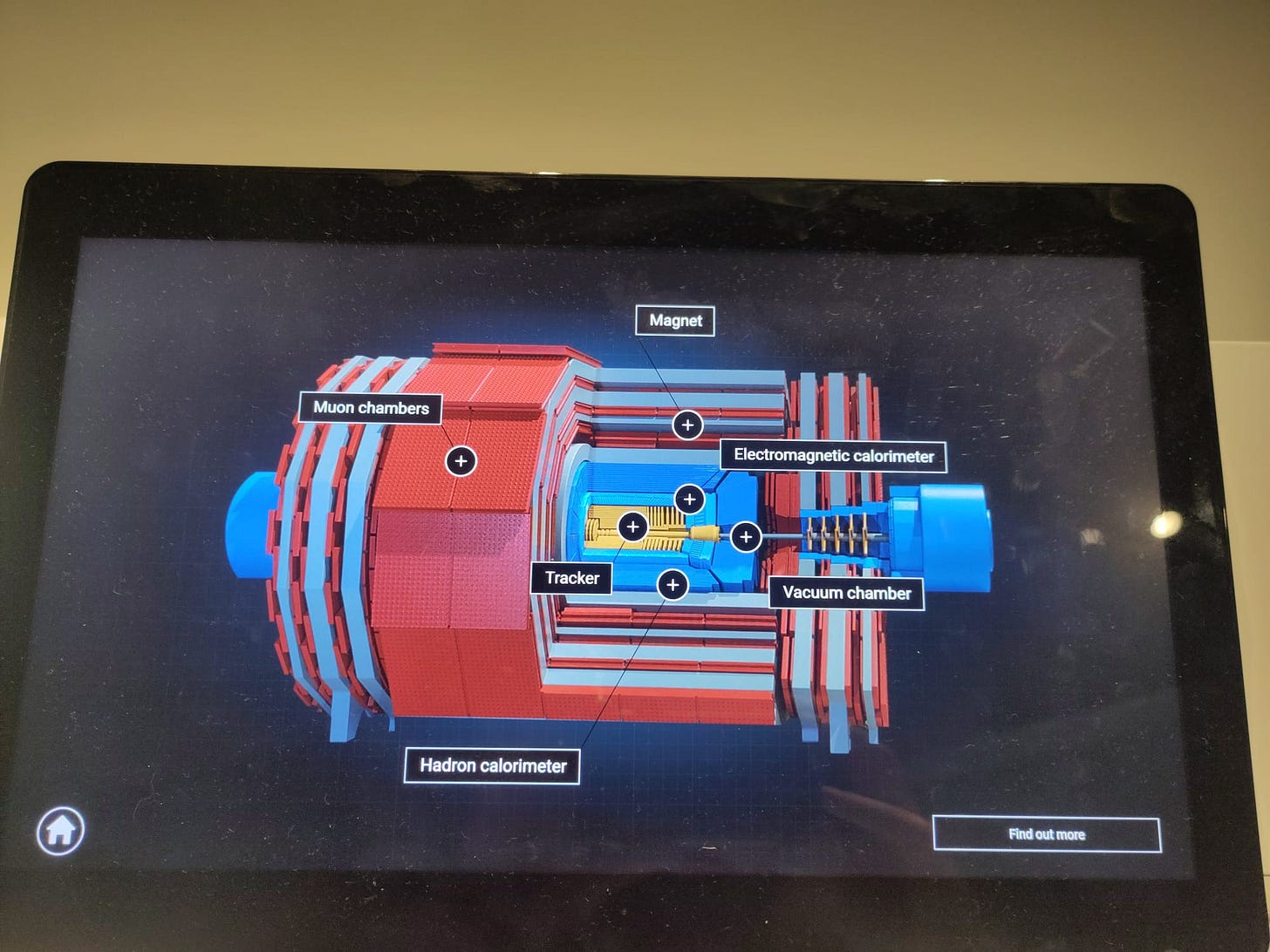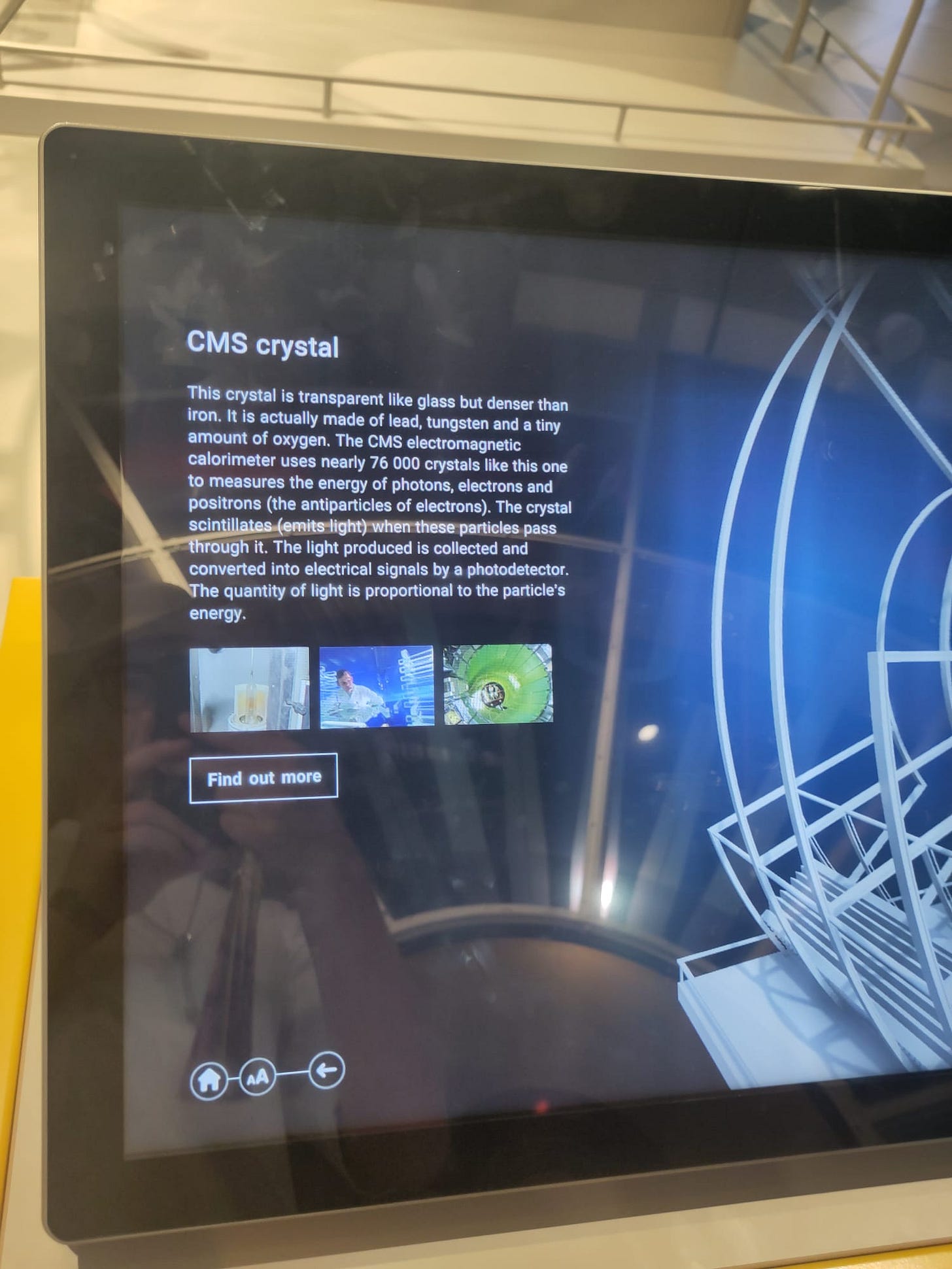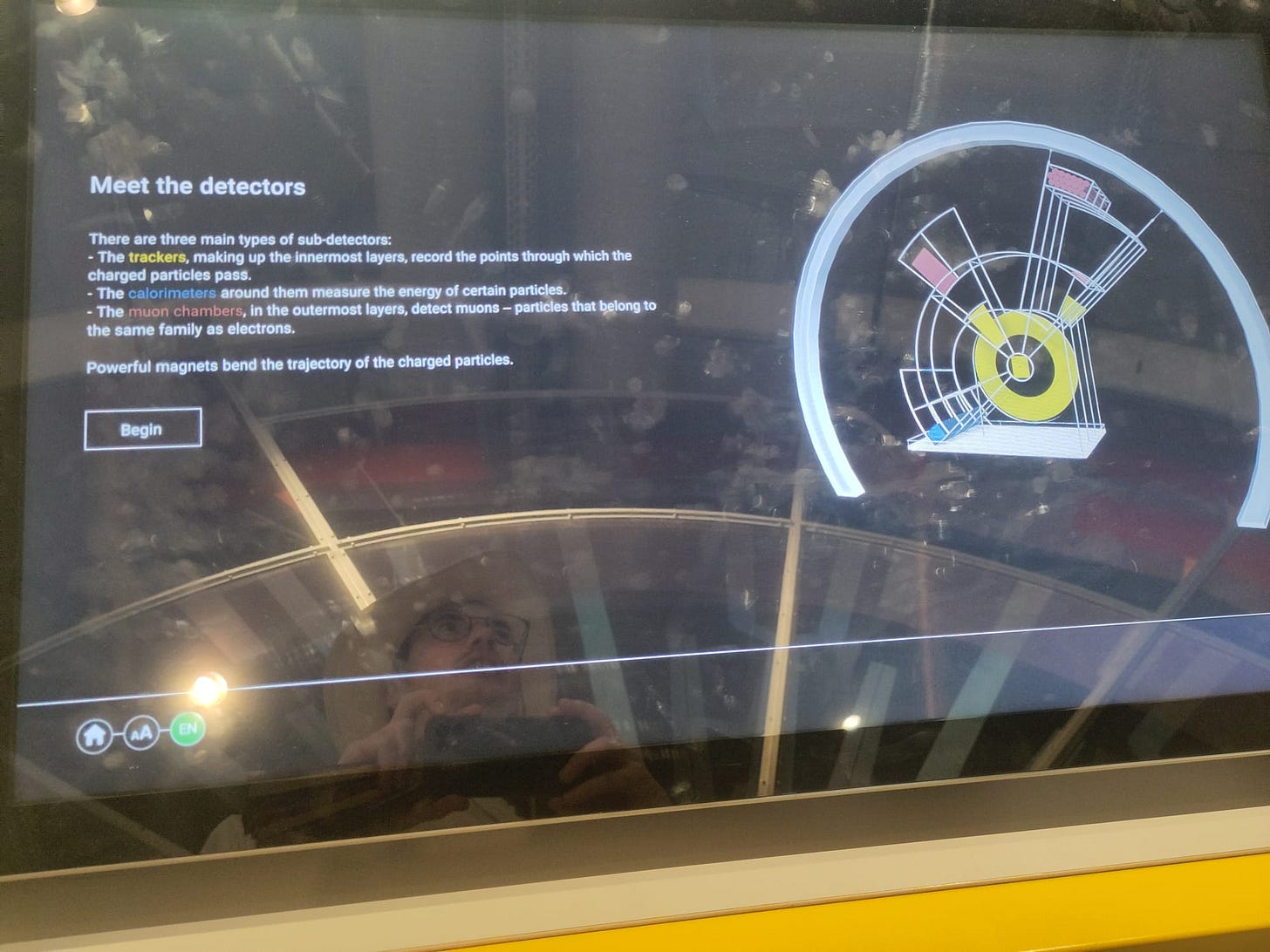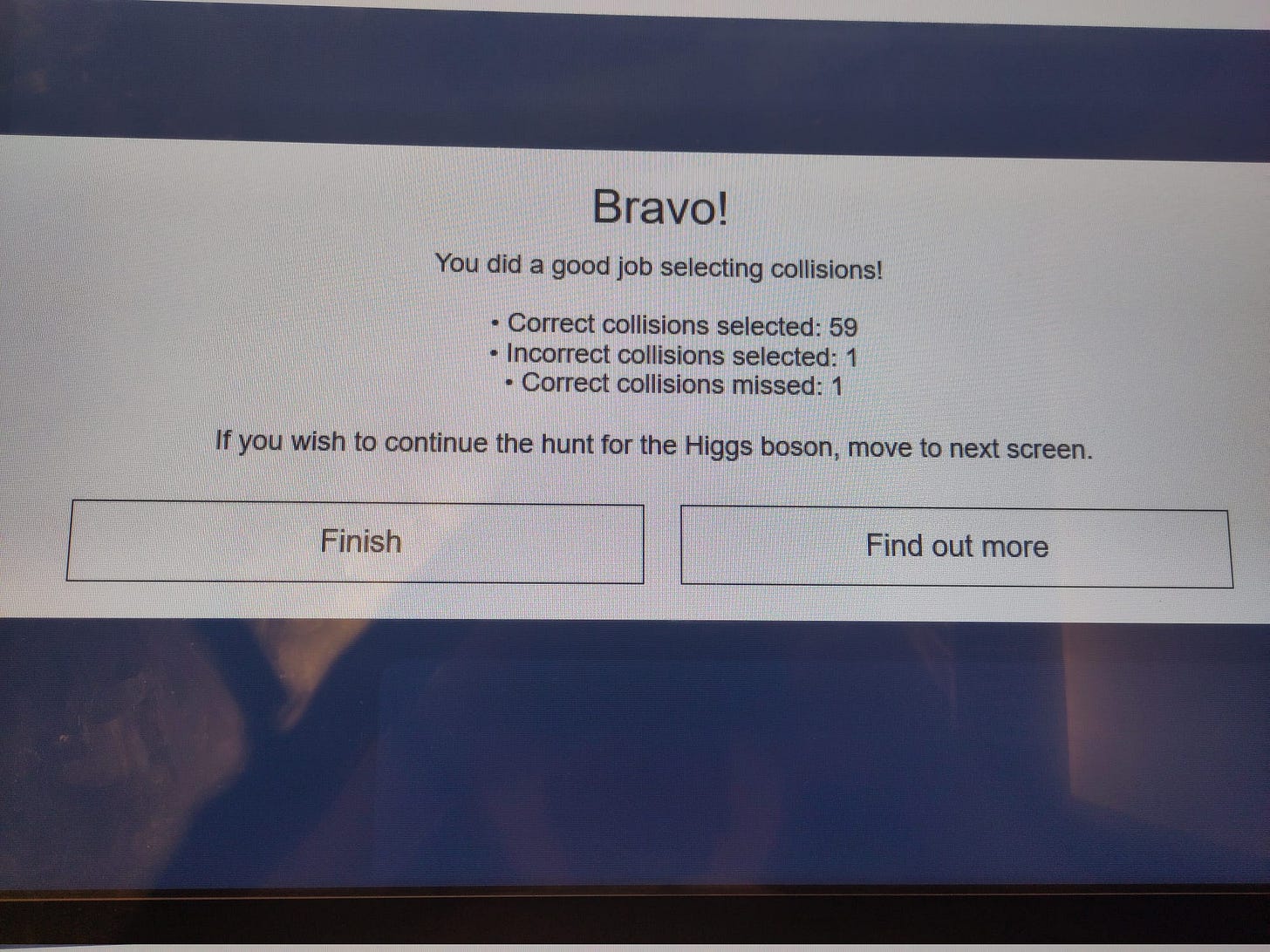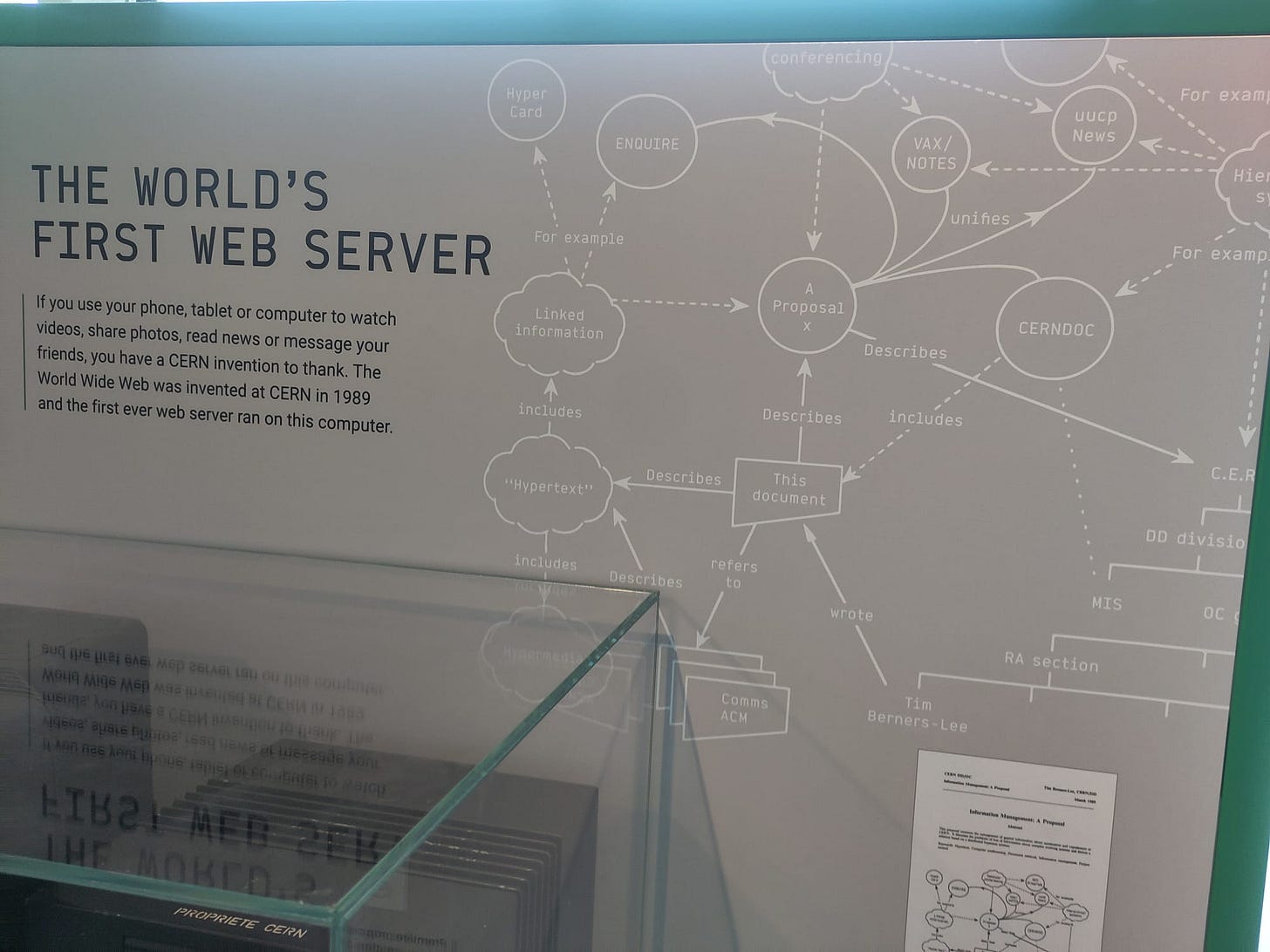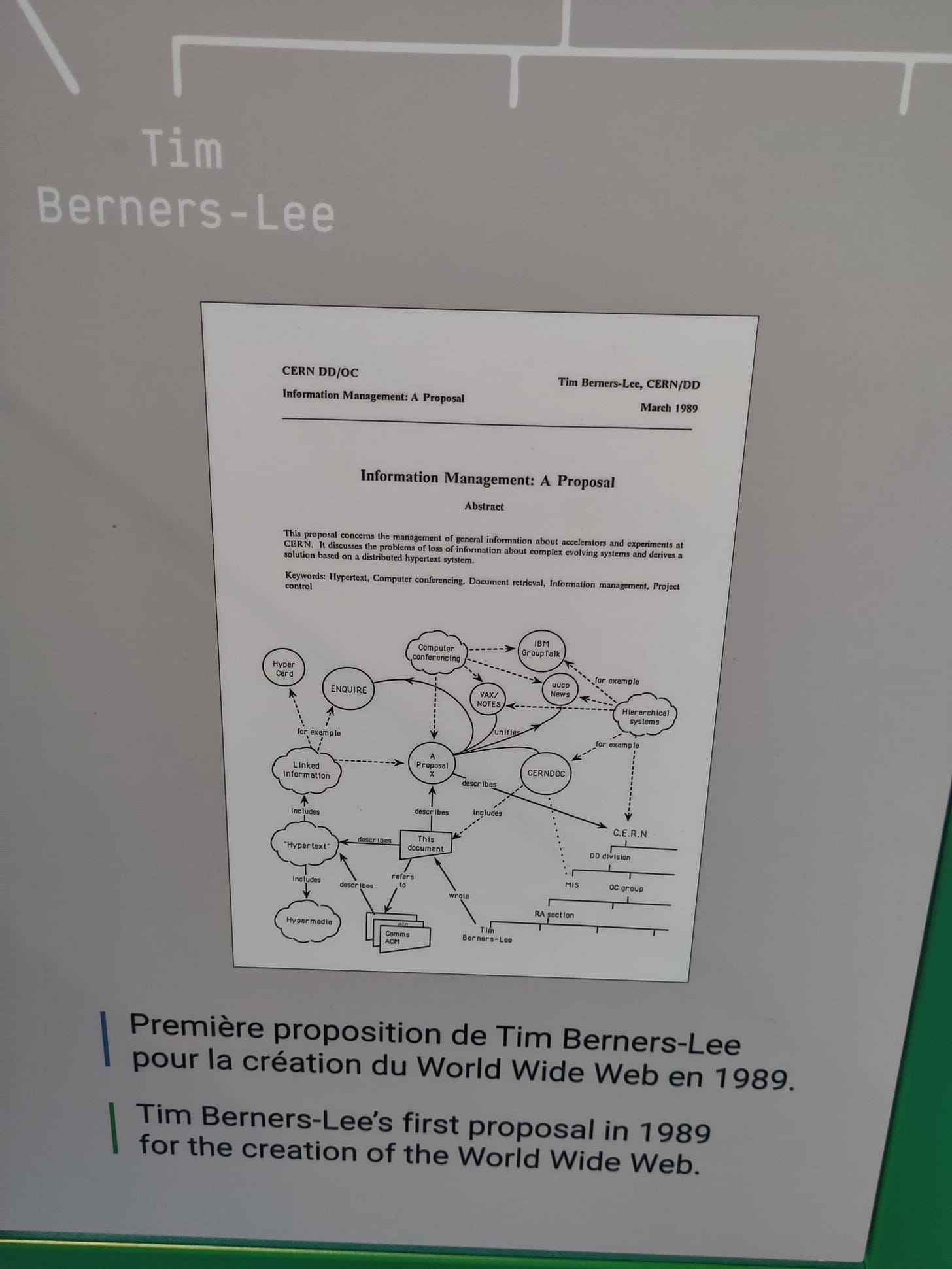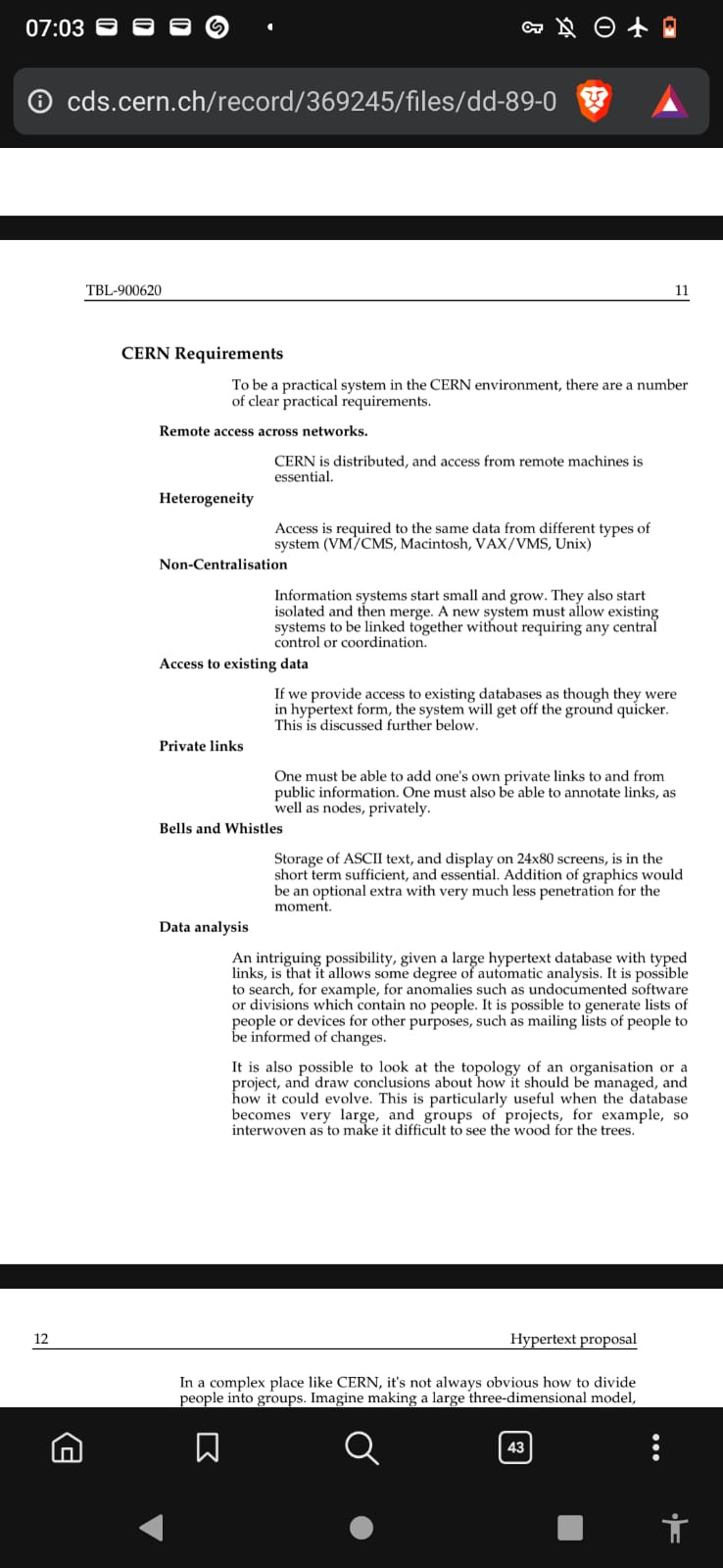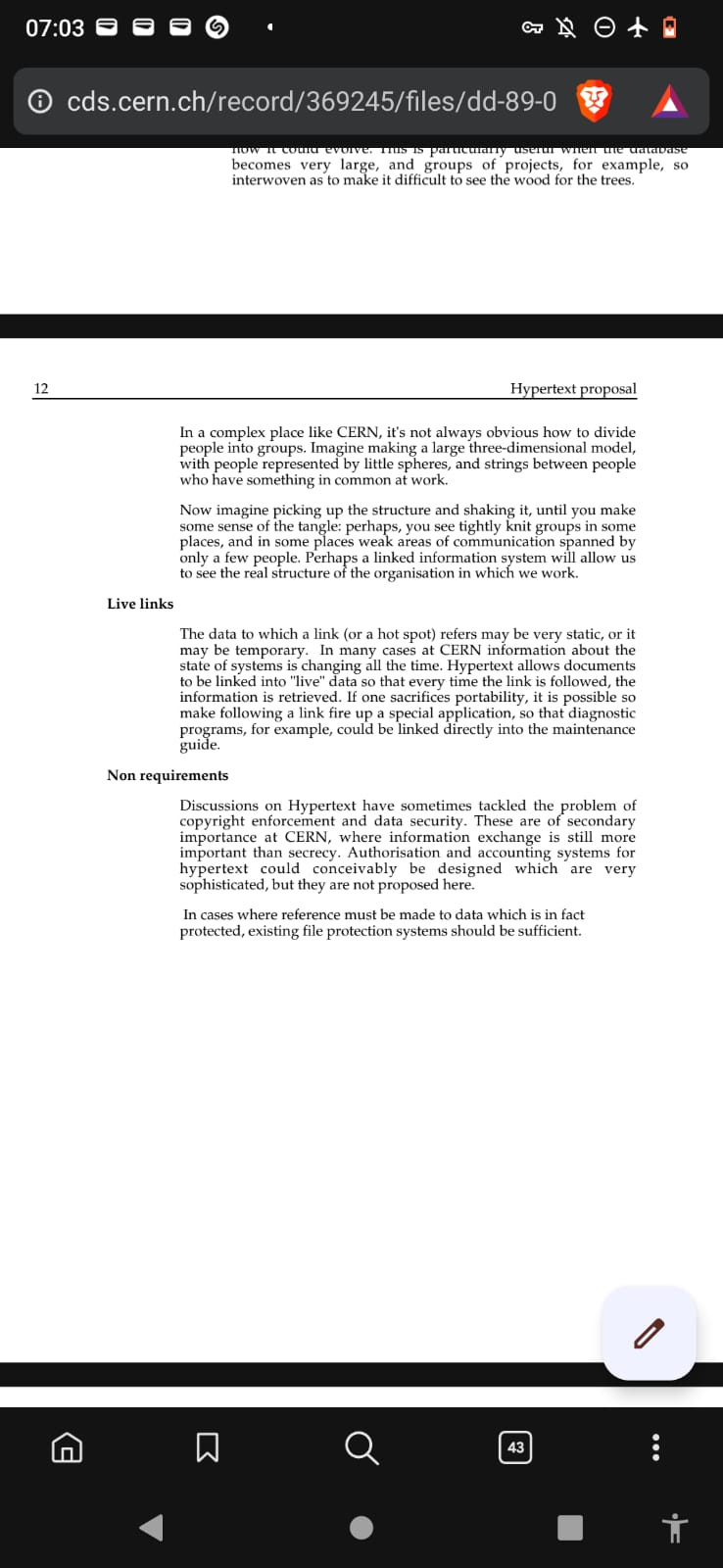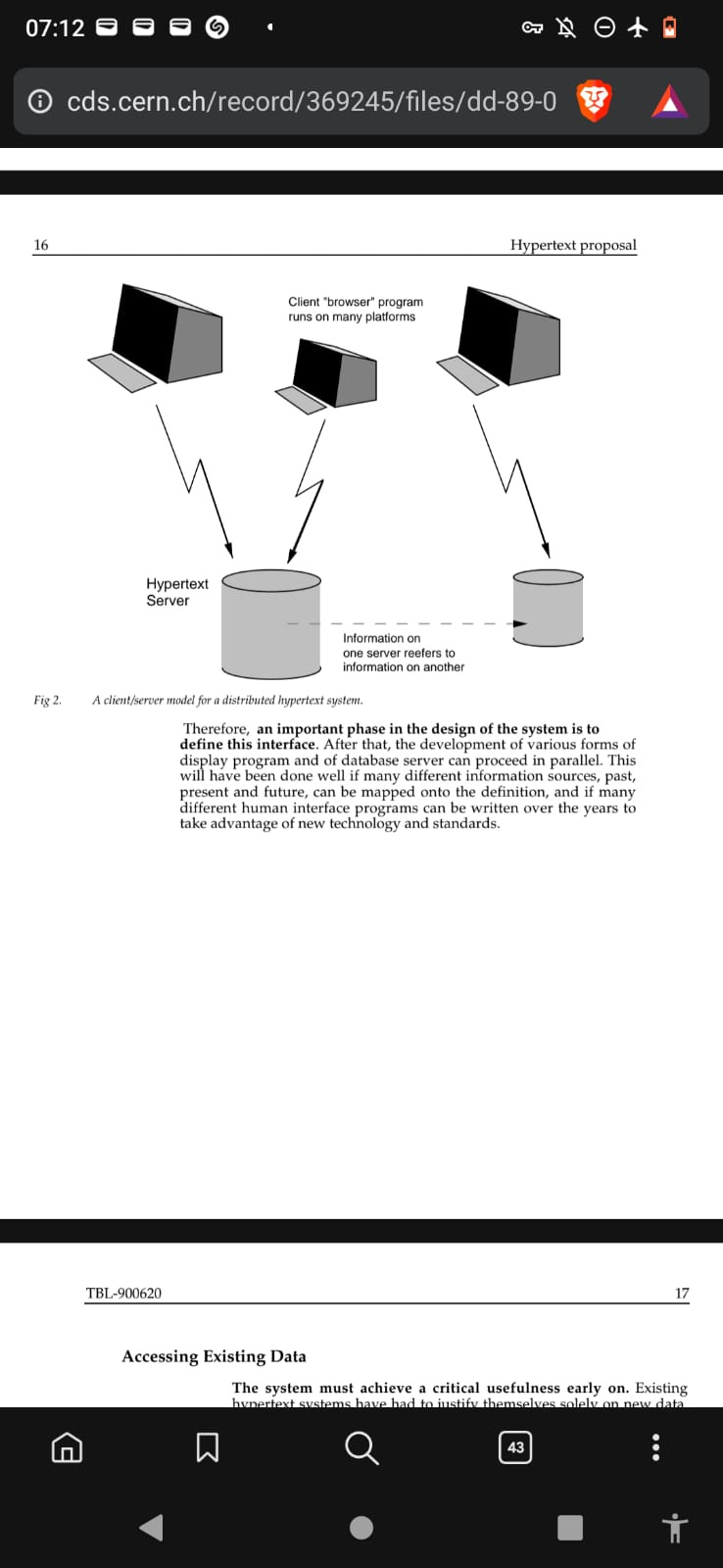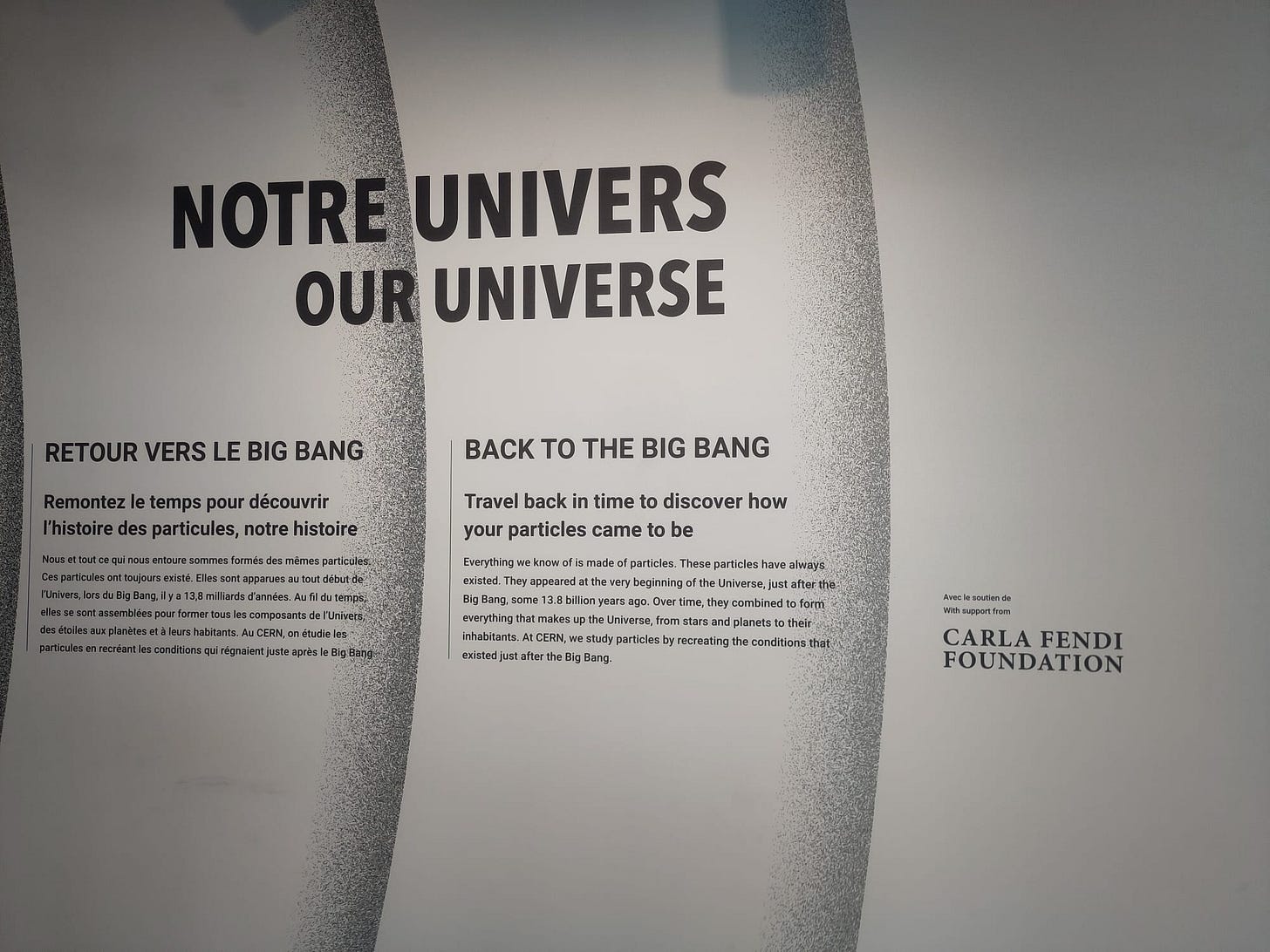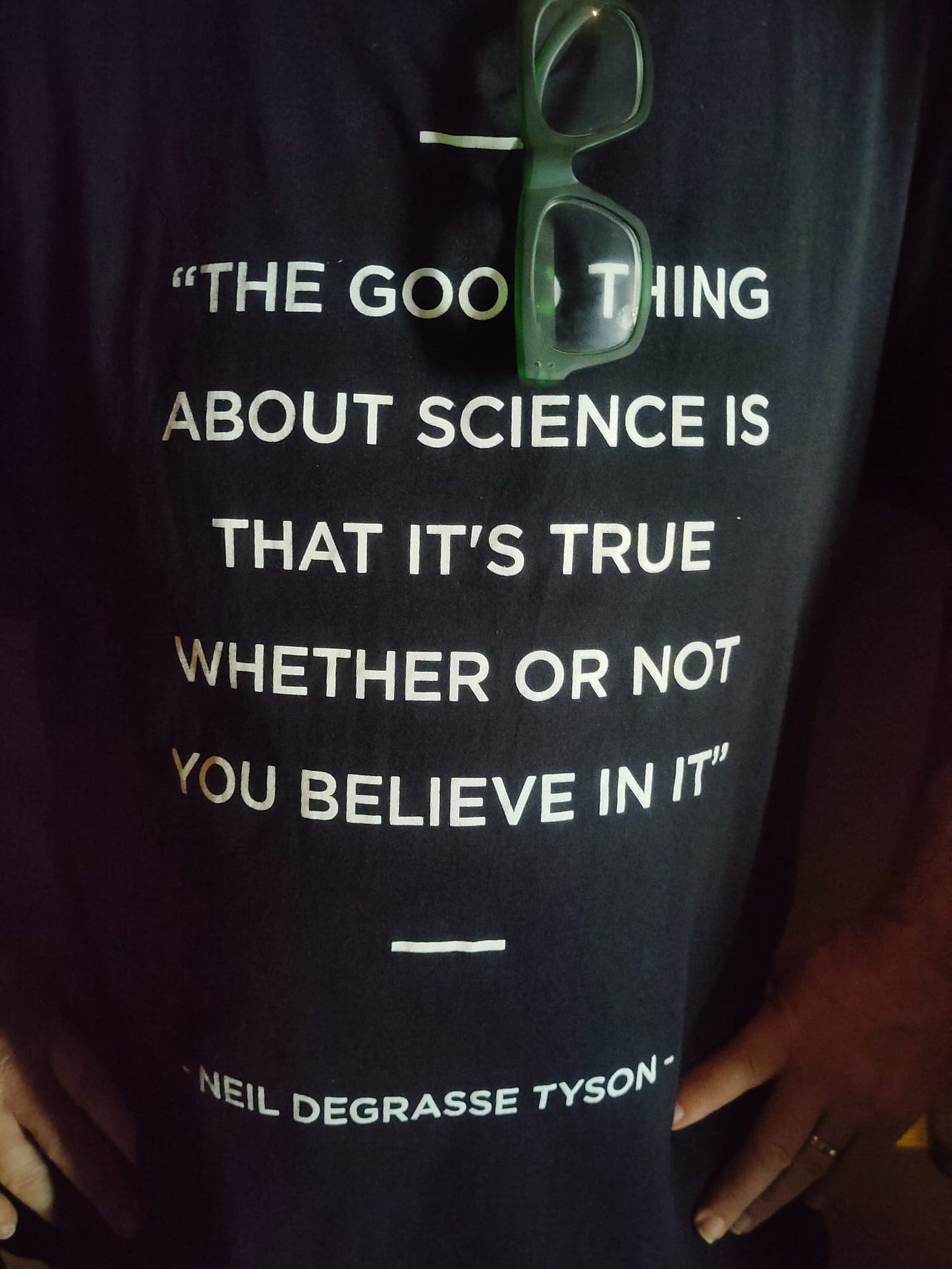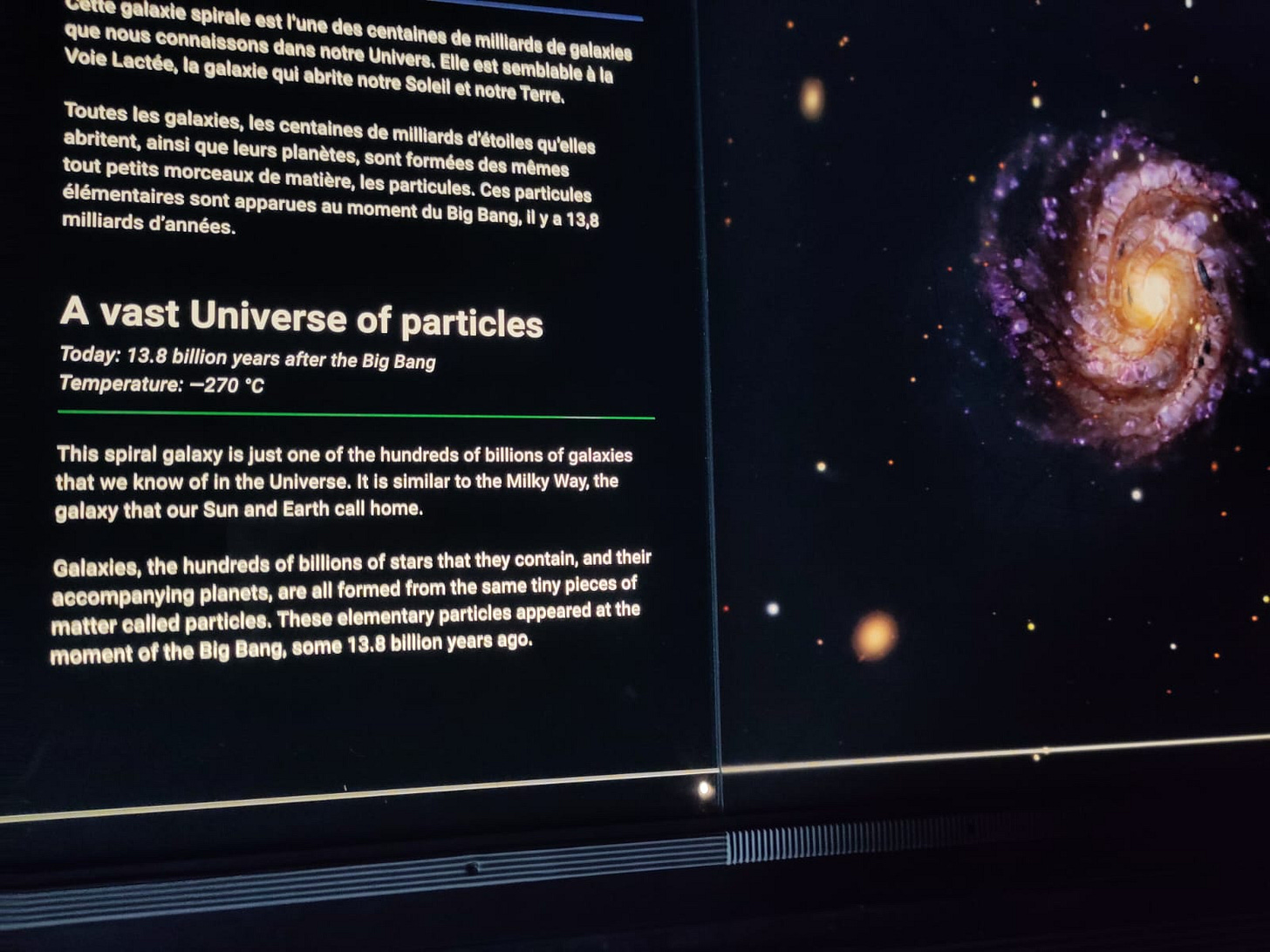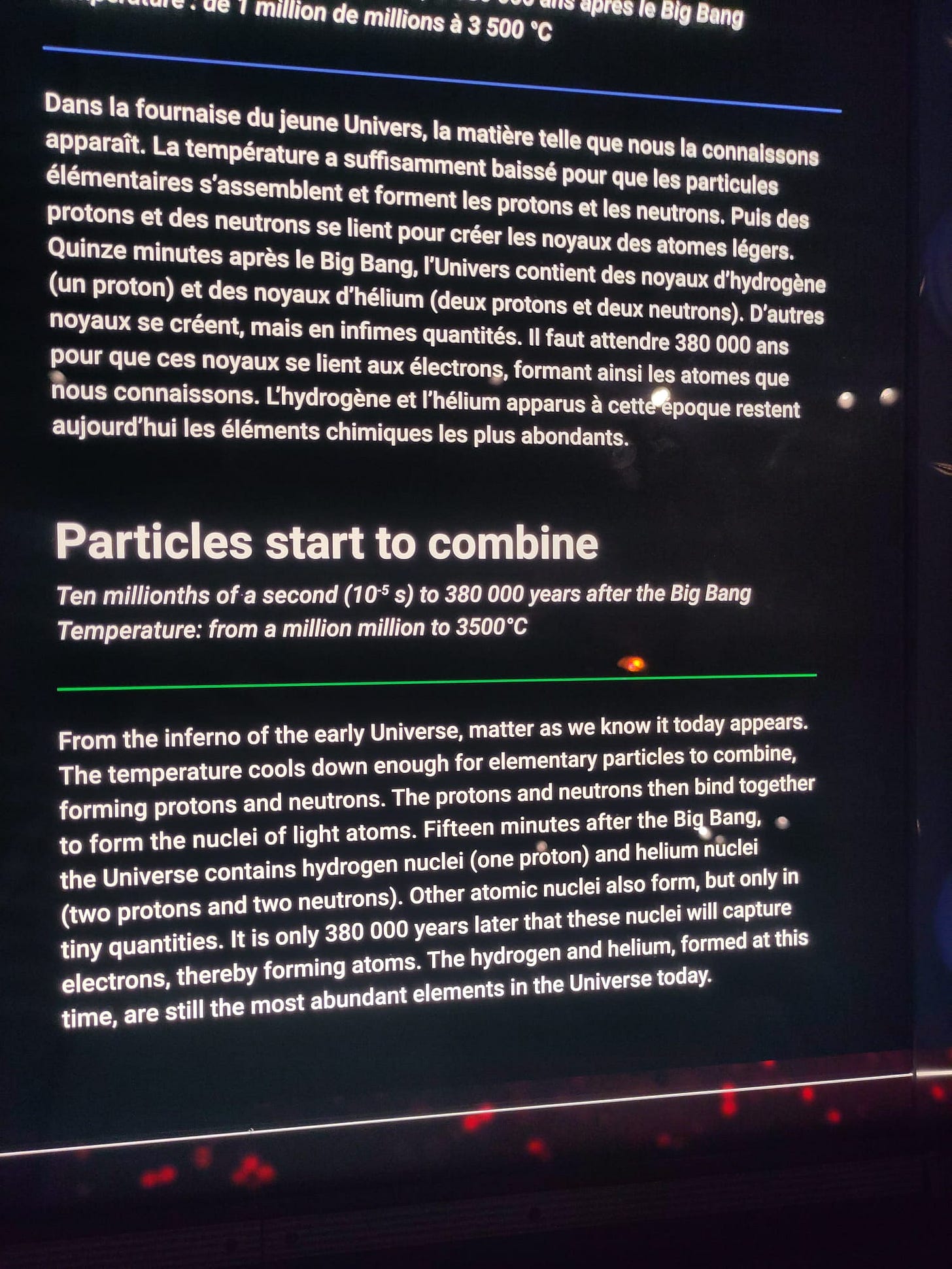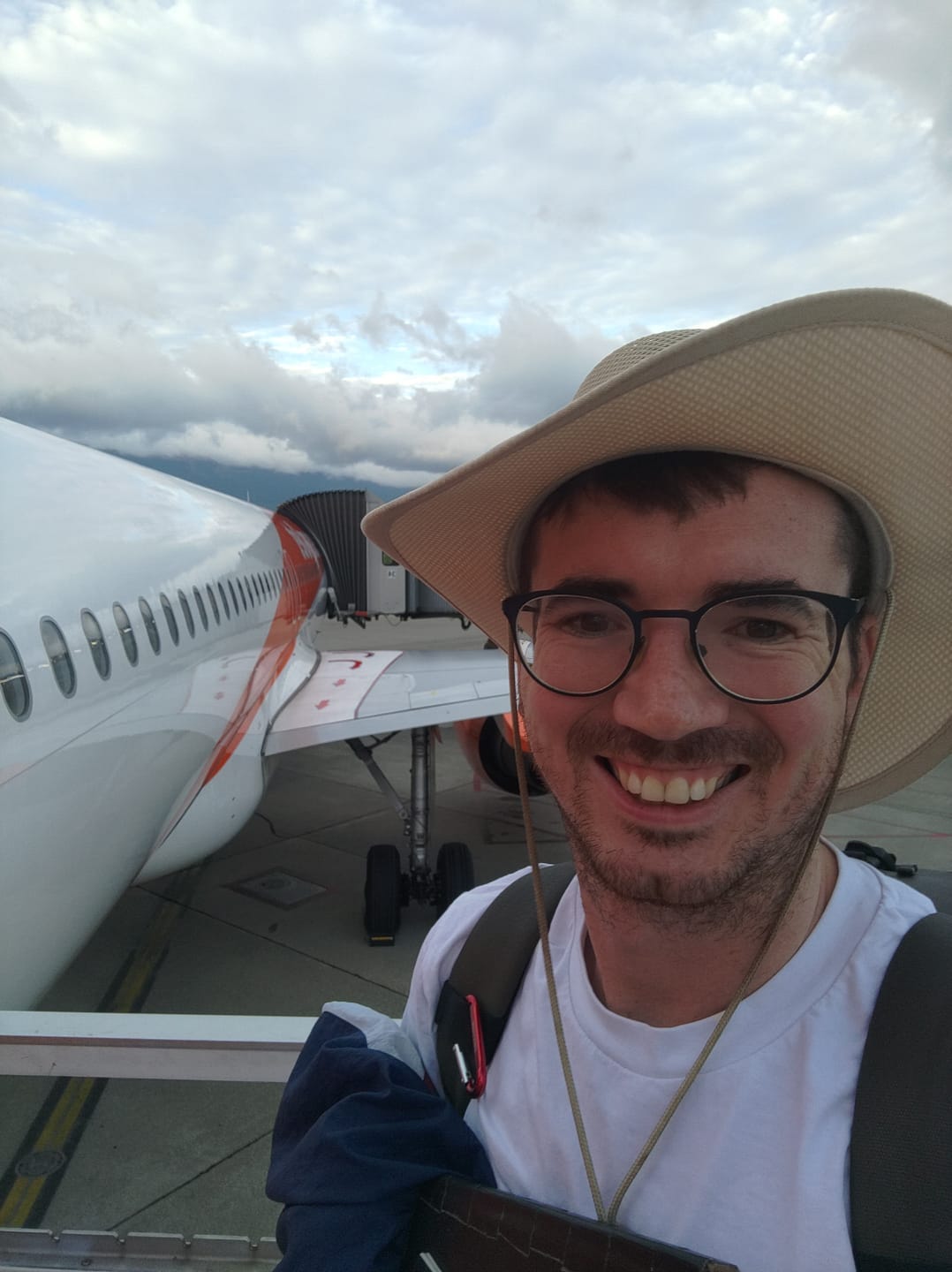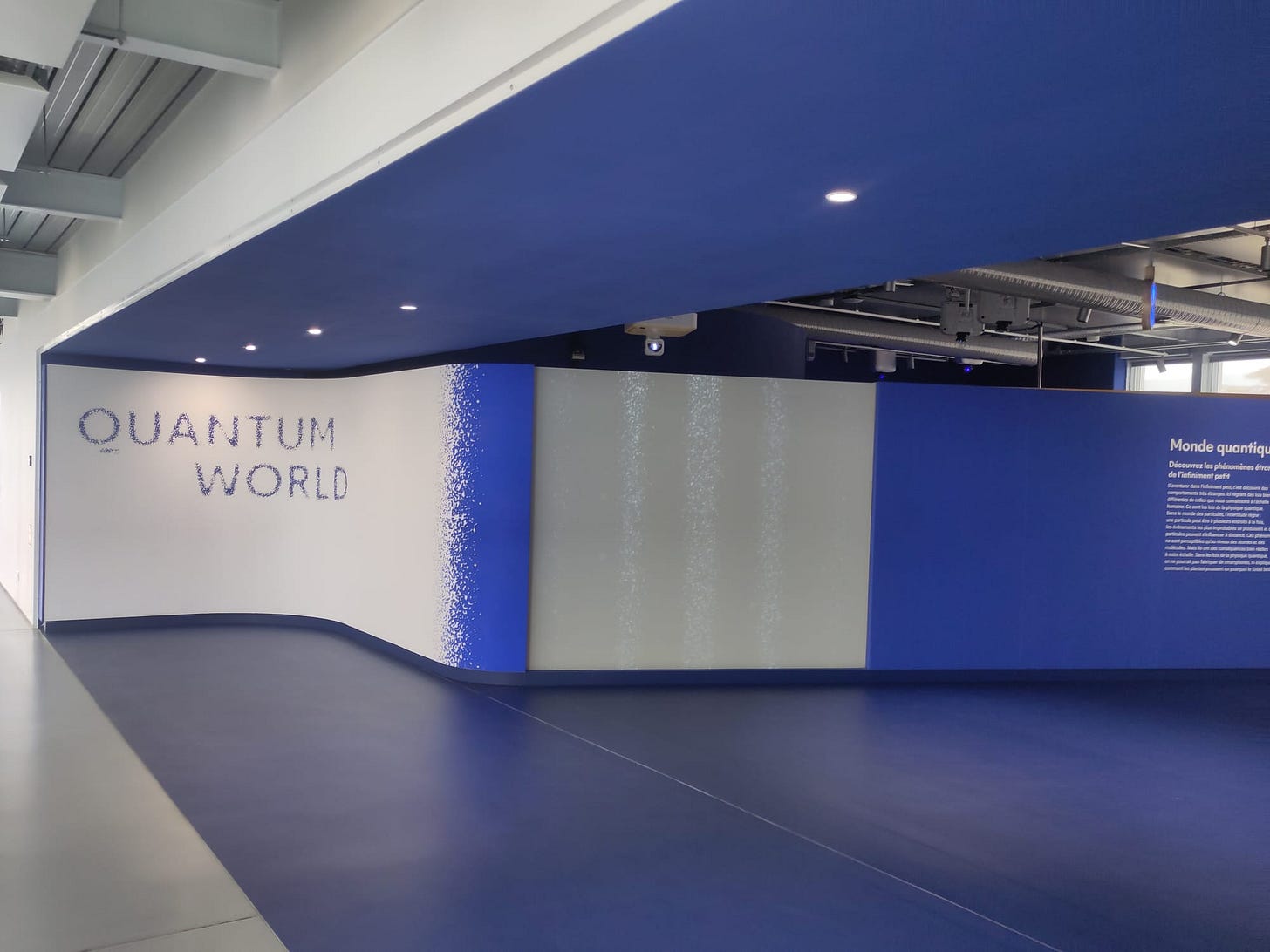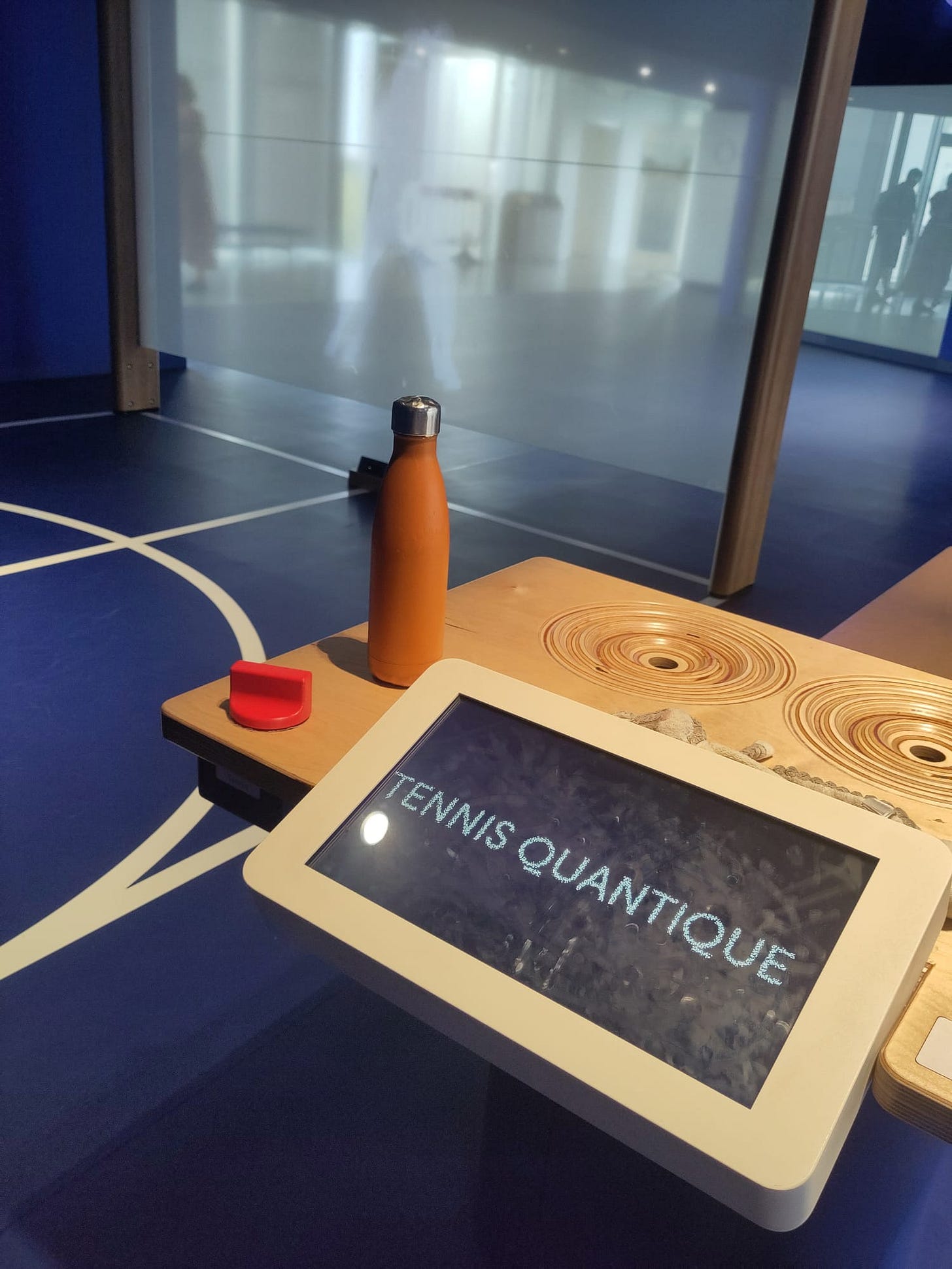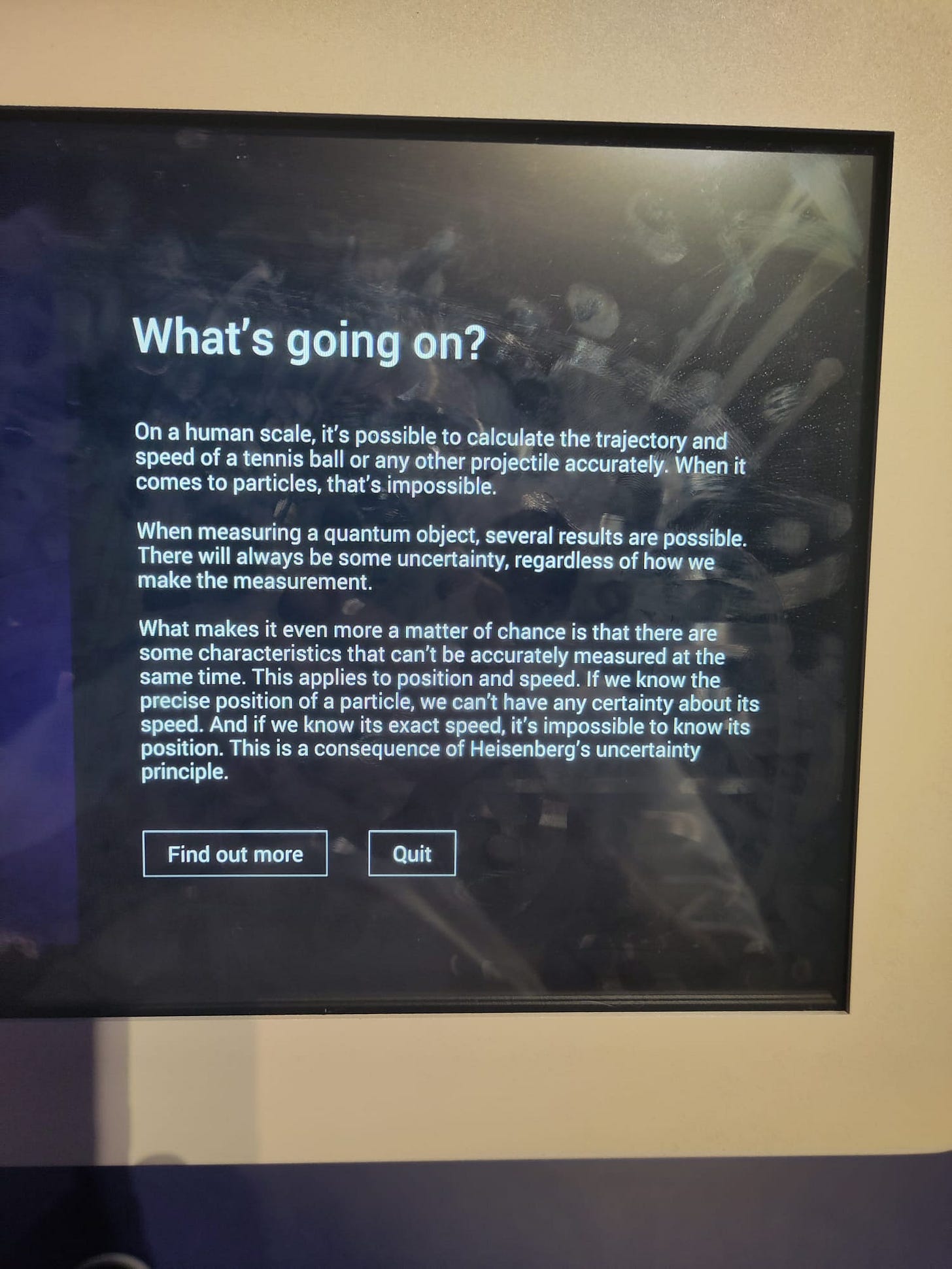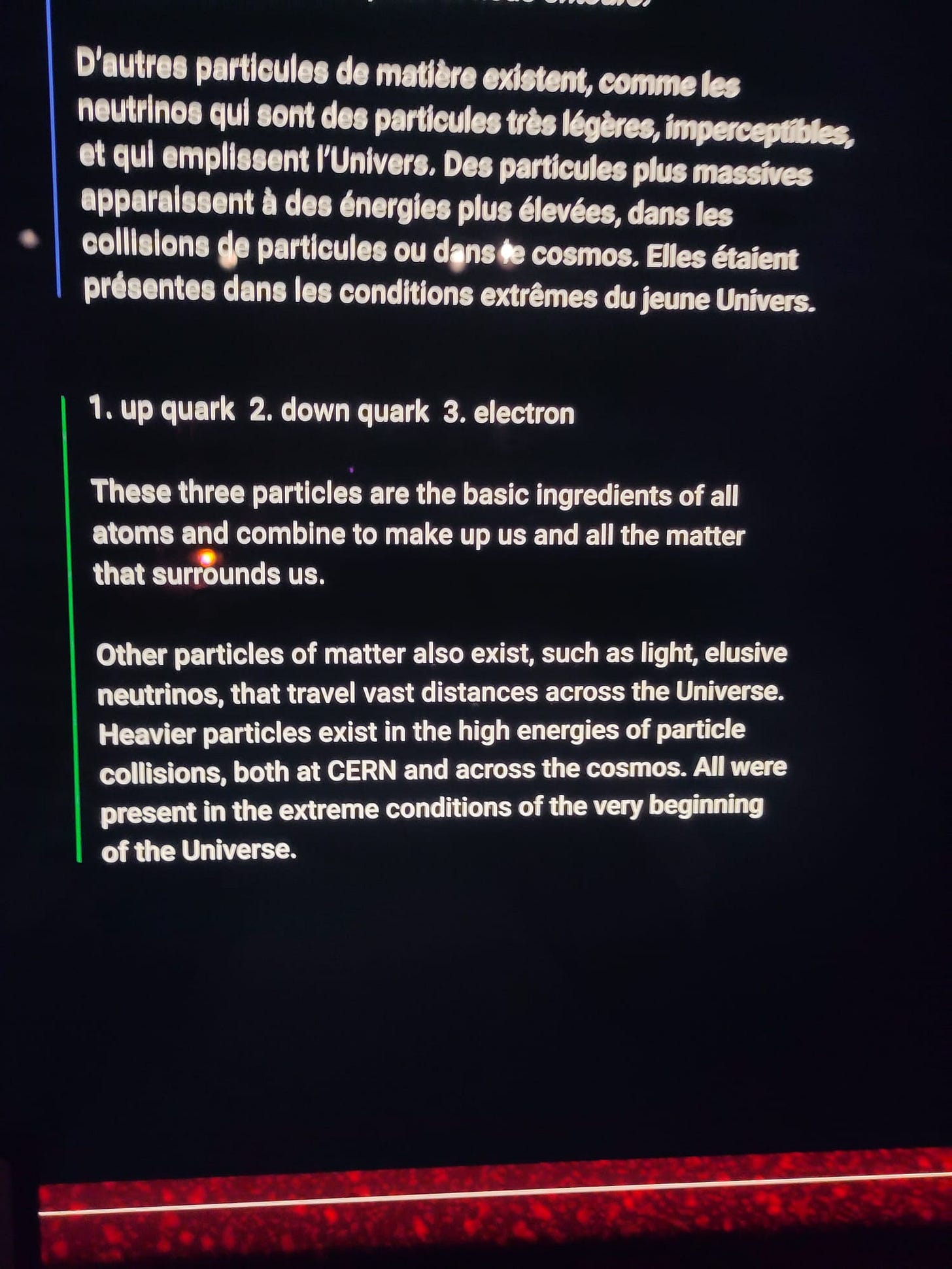Dr Wip's tour of CERN
A big Legendarios day out
Come with us on a journey into the origins of our universe. To the lands of gluons, muons and hot quark soup. Look in wonder and awe upon our complex, quantum reality that we all must learn to navigate.
Me, Joe, Bengo and his family explored CERN together the day after the Global Digital Collaboration conference in Geneva. It was fantastic and thought provoking. With these words I try to capture a glimpse of the museum and it’s wonders.
First though, let me say that this tour is no substitute for the real deal. The CERN museum kicks ass, highly recommend a visit if you're ever nearby.
First, I will say that we were at the Large Hadron Collider on a momentous occasion. During a 2 week series of experiments where they collided particles never before tested. O2 and protons. O2 and O2. Neon and neon.
Trying to learn more about the universes starting conditions and the quark-gluon plasma that forms the background radiation we see all around us as we look back at the through space and time
Also known as the hot quark soup.
First we are going to look at how the LHC accelerates beams of particles to the necessary speeds required to transfer enough energy to trigger a successful collision
A bit of history. Retired accelerator after 40 years of service. The some of the protons in the experiments that discovered the higgs Boston started life here
At CERN particles are accelerated around a 27km doughnut many thousands of times a second. This is the largest Hadron Collider in the world. The Lord of the Colliders.
To achieve this acceleration, humongous magnets are used to curve the charged beams of particles around this ring. Magnet s are 8Tesla in strength and have to be cooled to 2 Kelvin. This is the strongest magnet in the world and the lowest temp we can achieve
Great little experiment to illustrate
Also this boss quote from their particle physicist, Frederick who clearly loved his job.
Cern is "Multi-faceted, multinational, multi intellectual experience. Feel at the heart of science. Magical." - roughly paraphrasing.
Okay that's about it for accelerate.
TLDR: The Large Hadron Collider accelerates two beams of charged particles the opposite way around a 27km right using magnetic forces. Once requisite speeds reached - 99.99999% speed of light - they collided the beams together.
We are heading to look at collision next.
First though, shout out to Ewen, responsible for operations at CERN. Great job speaking the queens laddy!
Okay moving in to collide. Let's see if we can get through this before I board
This was cool, a Lego collider.
Meet the detectors. Using something called a CMS crystal they detect the energy of protons etc flying about after the collision. Apparently they collect insane amounts of data and had to come up with new tools for process this
Cool game where you had to sort and process the data in order to detect the higgs boson. Or rather the particles that the Higgs boson degrades into due to its instability
Okay, that's all I had for collide. Collide is all about what can we measure, record and learn from the collisions that take place in the LHC. I mean how do you measure fragments of atoms that explode out of these high energy collisions then dissipate within moments. Sounds like a gnarly problem
Next we move on to Our Universe.
But first an aside: Tim Berners-Lee and the world's first Web server originated at CERN. Probably in part as an answer to how to process, organize and share all the reams of data and academic research produced by these experiments. Pretty freakin cool!
For the nerds in the house. Read TBLs first paper where he articulated the architecture for what we know as the world wide web today. A bit of history right there.
https://cds.cern.ch/record/369245/files/dd-89-001.pdf
I read it on my flight home.
Some highlights:
"The actual observed working structure of the organisation is a multiply connected “web” whose interconnections evolve with time. In this environment, a new person arriving, or someone taking on a new task, is normally given a few hints as to who would be useful people to talk to. Information about what facilities exist and how to find out about them travels in the corridor gossip and occasional newsletters, and the details about what is required to be done spread in a similar way. All things considered, the result is remarkably successful, despite occasional misunderstandings and duplicated effort."
CERN and its challenges with data management motivated the development of the World Wide Web. Bold my own.
"The problems of information loss may be particularly acute at CERN, but in this case (as in certain others), CERN is a model in miniature of the rest of the world in a few years time."
"the method of storage must not place its own restraints on the information."
"Keywords are a common method of accessing data for which one does not have the exact coordinates. The usual problem with keywords, however, is that two people never chose the same keywords. The keywords then become useful only to people who already know the application well."
" Imagine, then, the references in this document, all being associated with the network address of the thing to which they referred, so that while reading this document you could skip to them with a click of the mouse."
Requirements for the World Wide Web.
“Perhaps a linked information system will allow us to see the real structure of the organisation in which we work."
I found this to be prescient for what linked information of FB, Google and other digital surveillance systems enable today but applied to human lives.
Then finally, the real kicker for those in the identity space.
"Discussions on Hypertext have sometimes tackled the problem of copyright enforcement and data security. These are of secondary importance at CERN, where information exchange is still more important than secrecy. Authorisation and accounting systems for hypertext could conceivably be designed which are very sophisticated, but they are not proposed here."
TLDR: identification and authorization out of scope in the initial design.
Was this the first time a browser was referenced?
"There will always be a large number of information management systems - we get a lot of added usefulness from being able to cross-link them. However, we will lose out if we try to constrain them, as we will exclude systems and hamper the evolution of hypertext in general."
Shout out to Bengo for finding me a copy of this CERN memo. If anyone has not read this paper I highly recommend it. Especially if you are working in internet standards and identity. It is a bit of history.
Learn about the origins of this majestic edifice we are all building, sustaining and evolving!
Now Our Universe.
Spotted in our universe
And let me reflect on that for a bit. One question people ask is why bother. Why is it relevant to the here and now.
There are so many good answers to this question. I will just list a few.
First looking at our universe in wonder is wonderful. We have been looking up at the stars and wondering since the dawn of time. It puts things into perspective and is beautiful in it's mad complexity.
Second, the byproducts of this research, the things we need to create to create the tools for us to explore the universe in greater depth, are immensely valuable to the here and now. From computing, to medical imaging to magnets. All have been advanced by the scientific research community at CERN and others.
Finally, we cannot begin to contemplate the impact of this research into the building blocks of our physical reality will have in the future. But for sure it will be unexpected and most likely magical.
Our standard model of physics today, is deep and complex. A marvel of modern science. It is also incomplete, as I believe so models will be. In this case it does not account for gravity.
So look in wonder at the vast universe of particles of which we are but an insignificant spec of dust
I built a black hole. That was fun
I'm also super interested in the idea that stars are atom factories, and the analogies that can be made when considering humans as idea factories. May write more on this.
Ideas and the thought spaces surrounding them also collide and coalesce. Morph and change. Grow and shrink. Exert a force on those around them. Some become widely accepted after exploding in a supernova out into the consciousness of the world black hole. Some fade away into neutron stars.
At this point I take an interlude while I jump on my flight home from Geneva where I digested the TBL paper.
Then the final room.
Exploring our quantum worlds.
This was a fun, playful room. We had quantum tennis and other quantum inspired games.
Okay that's in from the museum direct. But I do have some post script based on conversations over beers.
Bengo shared this paper: IS THE BRAIN-MIND QUANTUM? A THEORETICAL PROPOSAL WITH SUPPORTING EVIDENCE
“A little out there, which i dont mind, but pretty great and well written/cited.” … “take with as much salt as needed” Bengo
He also mentioned that quarks can go plasma - https://en.wikipedia.org/wiki/Quark%E2%80%93gluon_plasma.
Give me some of that hot quark soup baby.
Then a couple of great links Joe that I haven’t processed yet but sound fascinating.
https://www.newscientist.com/article/2482841-the-radical-idea-that-space-time-remembers-could-upend-cosmology/
https://interestingengineering.com/science/time-has-three-dimensions
It's all memory baby!
Finally, I'll close with the book recommendation from bengo: Quantum Mind and Social Science.
I hope you enjoyed this brief tour of CERN from your pal Dr Wip. Delve as deep as you like.
If you read one thing, make it the Tim Berners-Lee paper: Information Management: A Proposal. That is a fascinating piece of history
Respect, I hope you enjoyed this little glimpse at a wonderful museum to a beacon of scientific thought.
Kind messages welcome x


